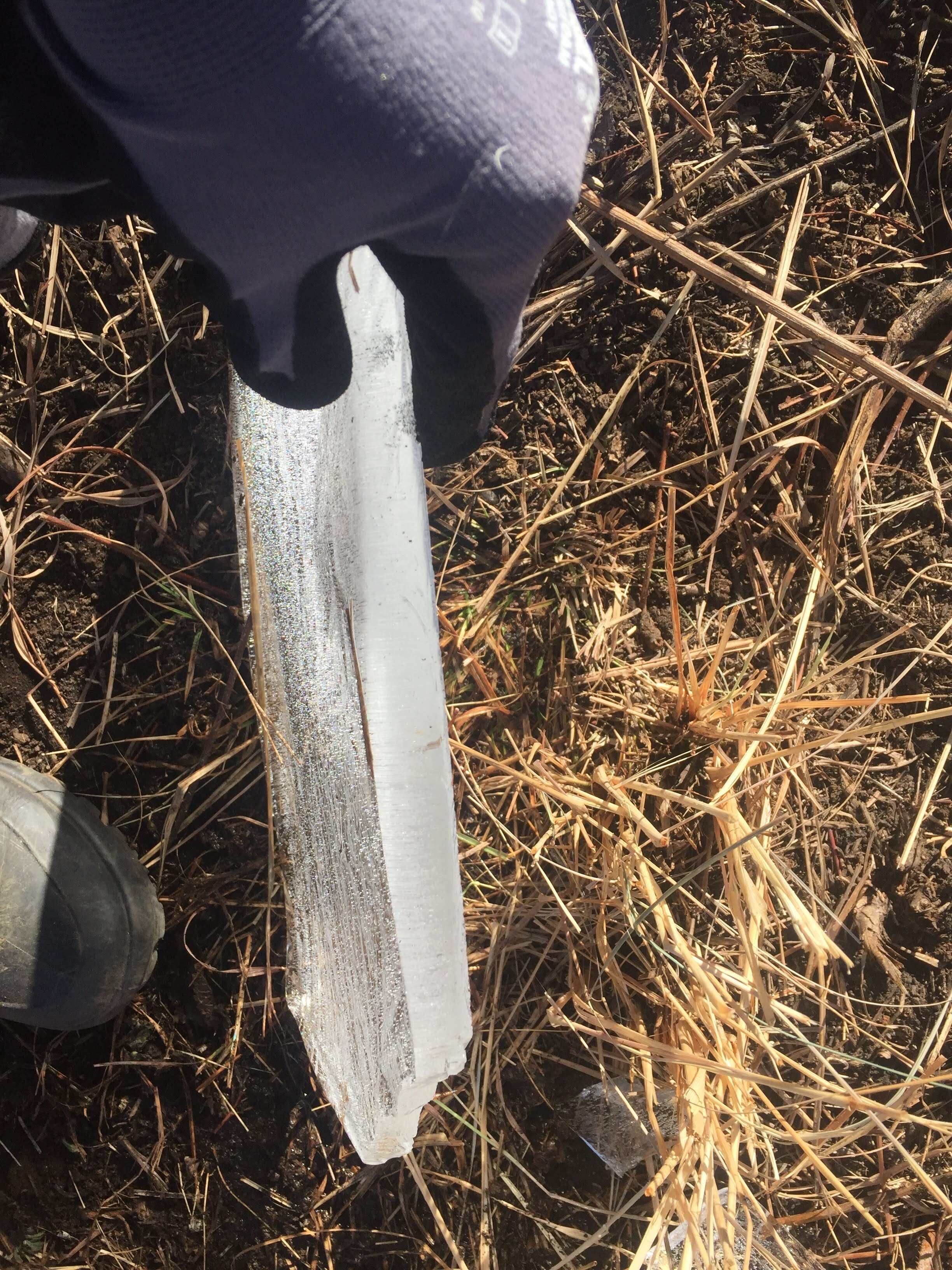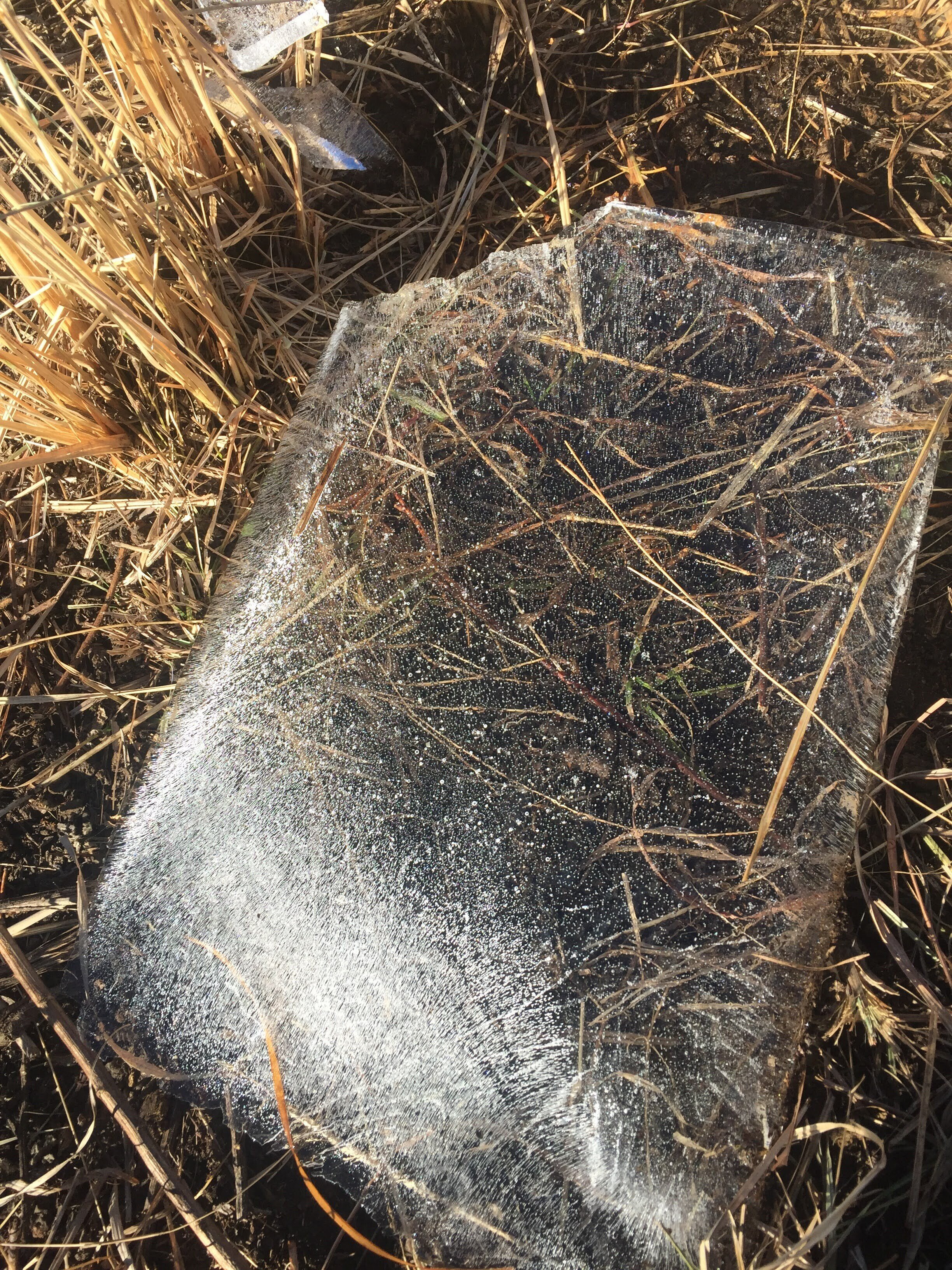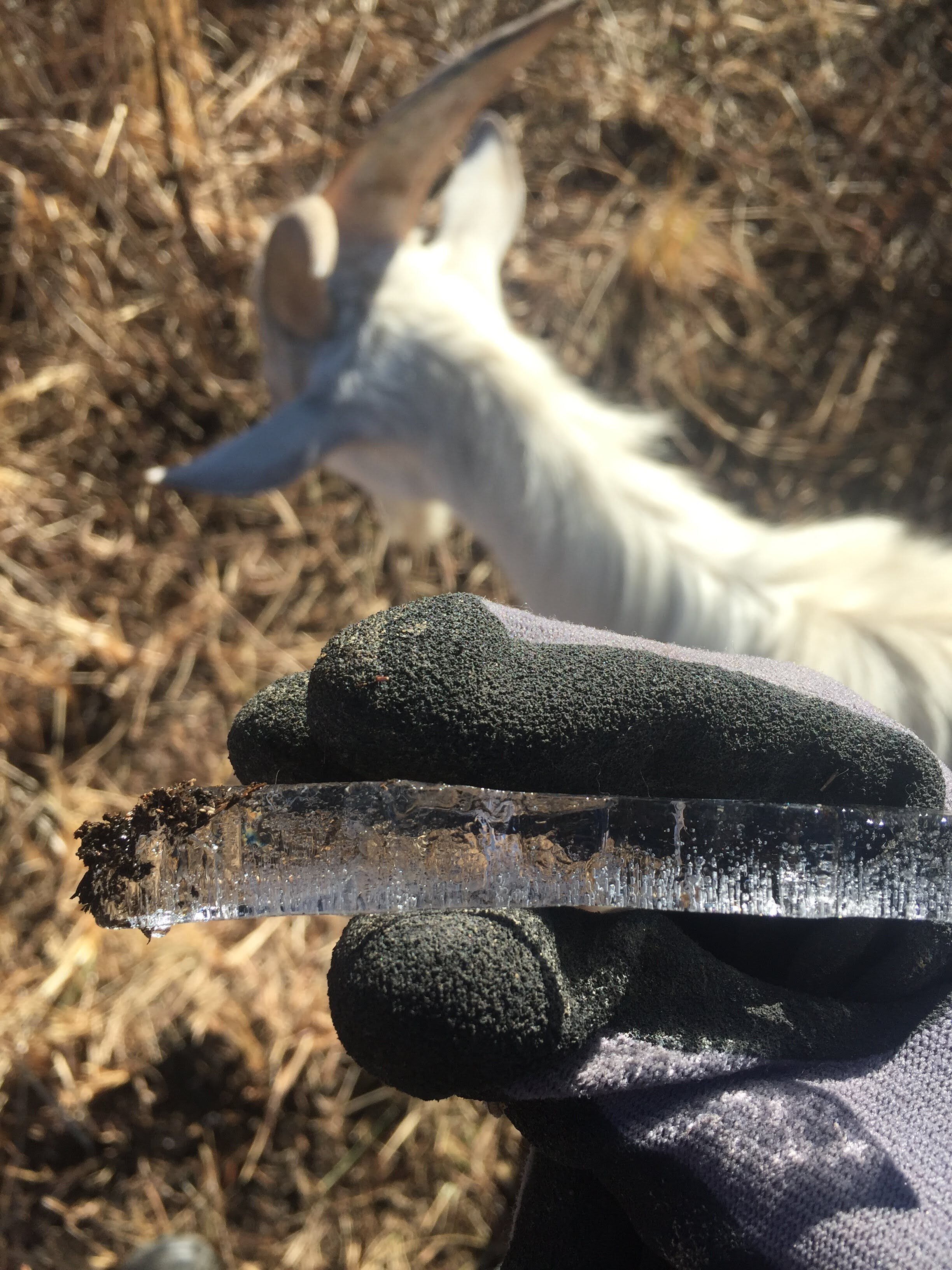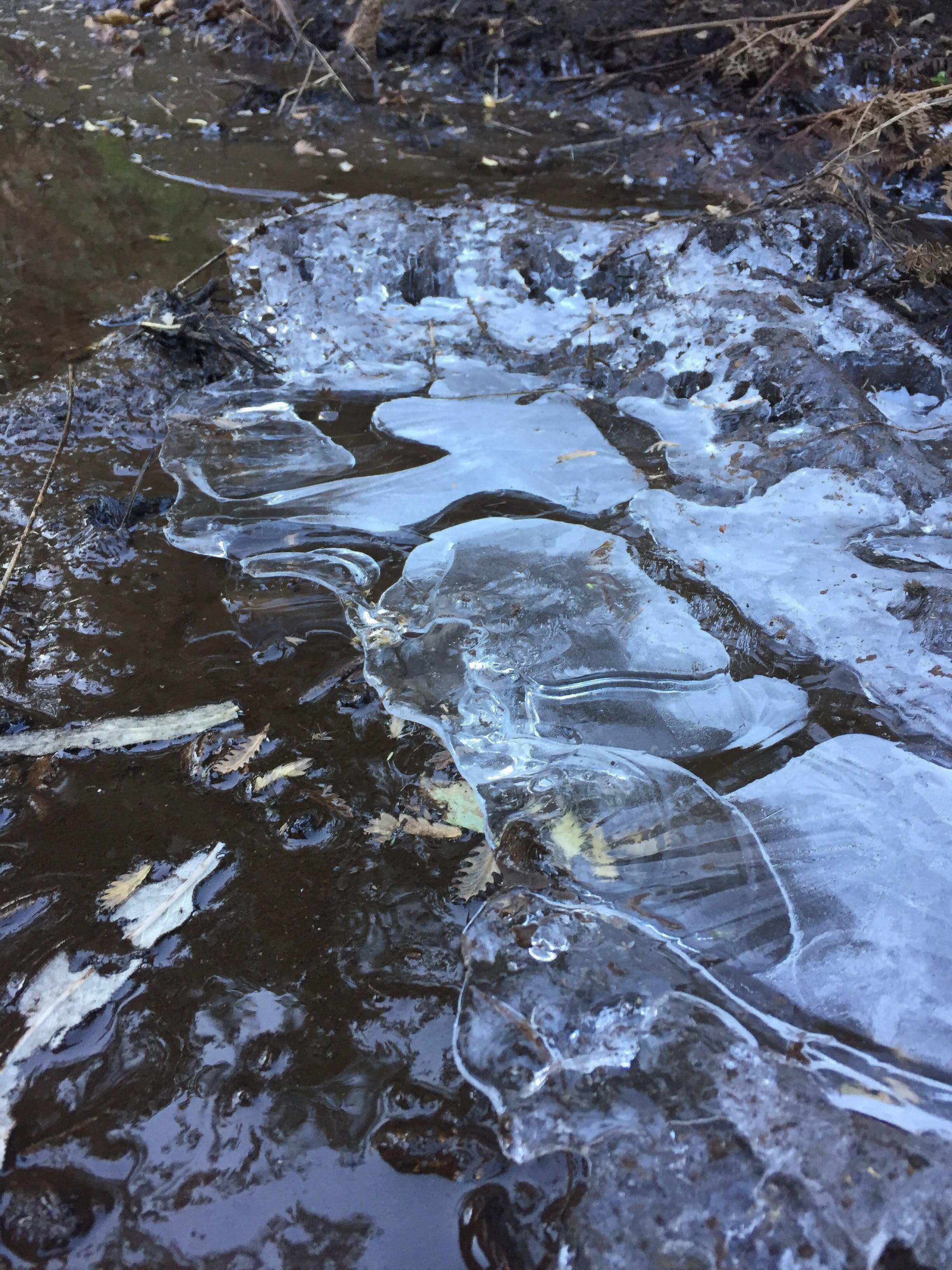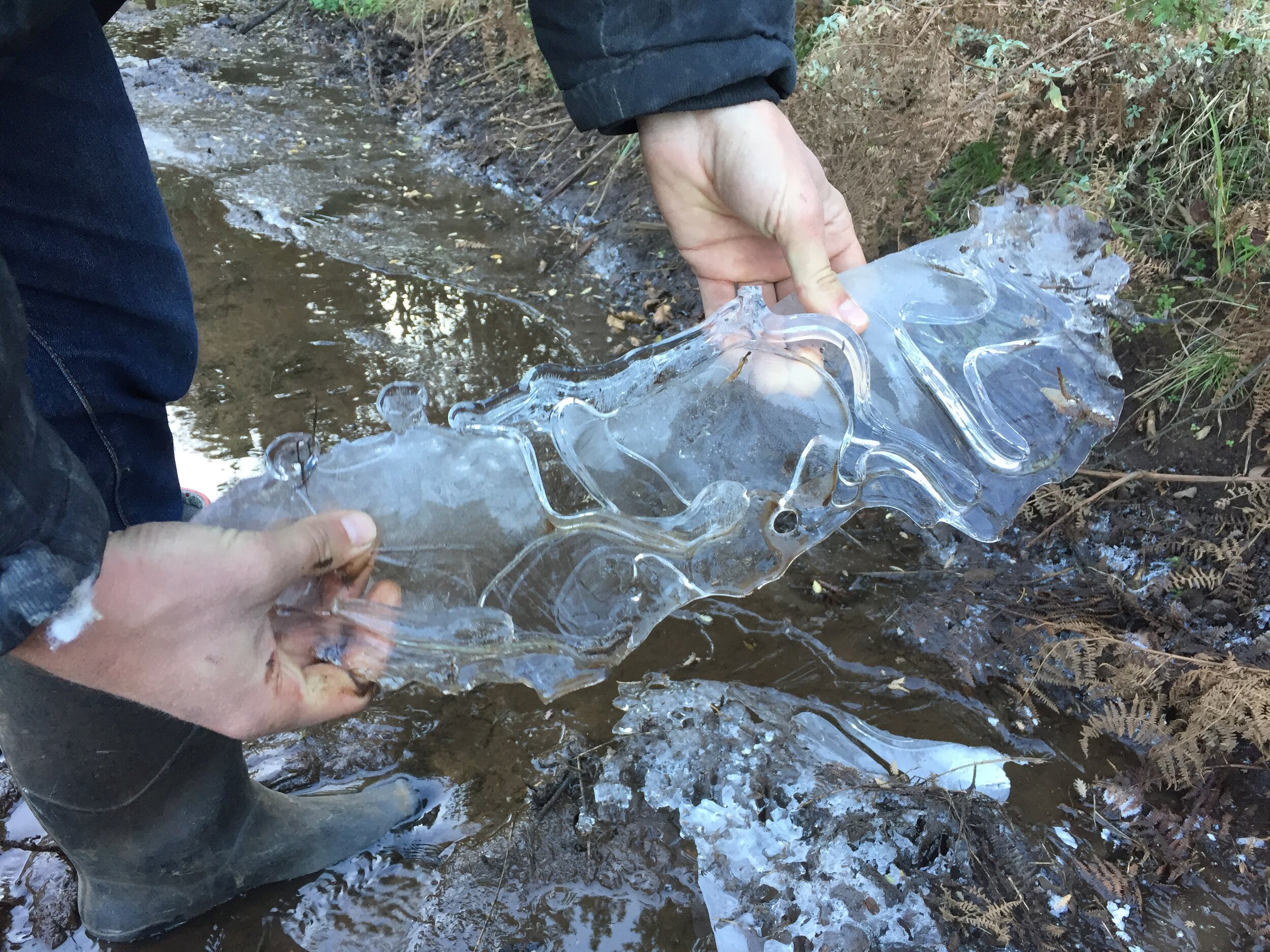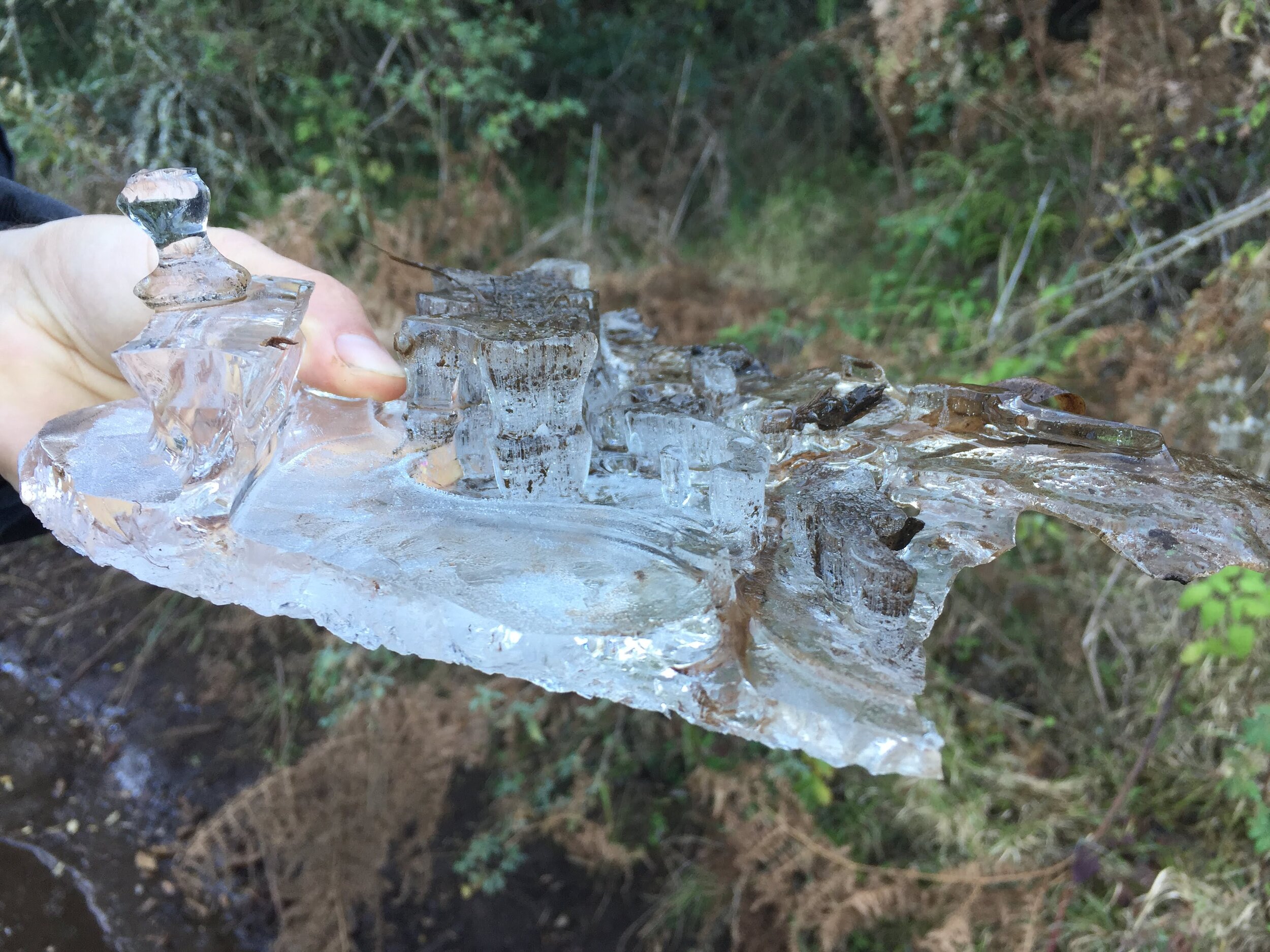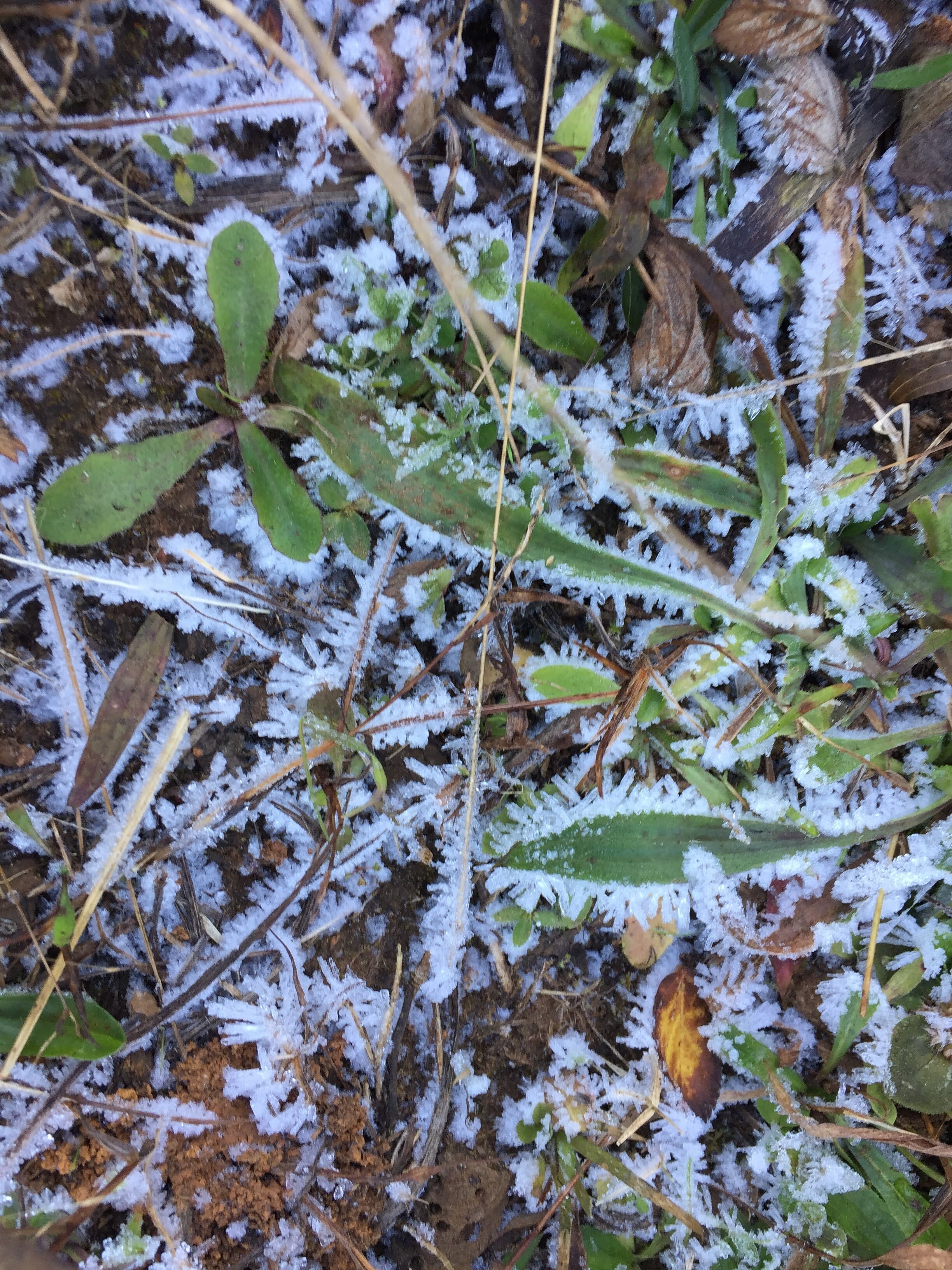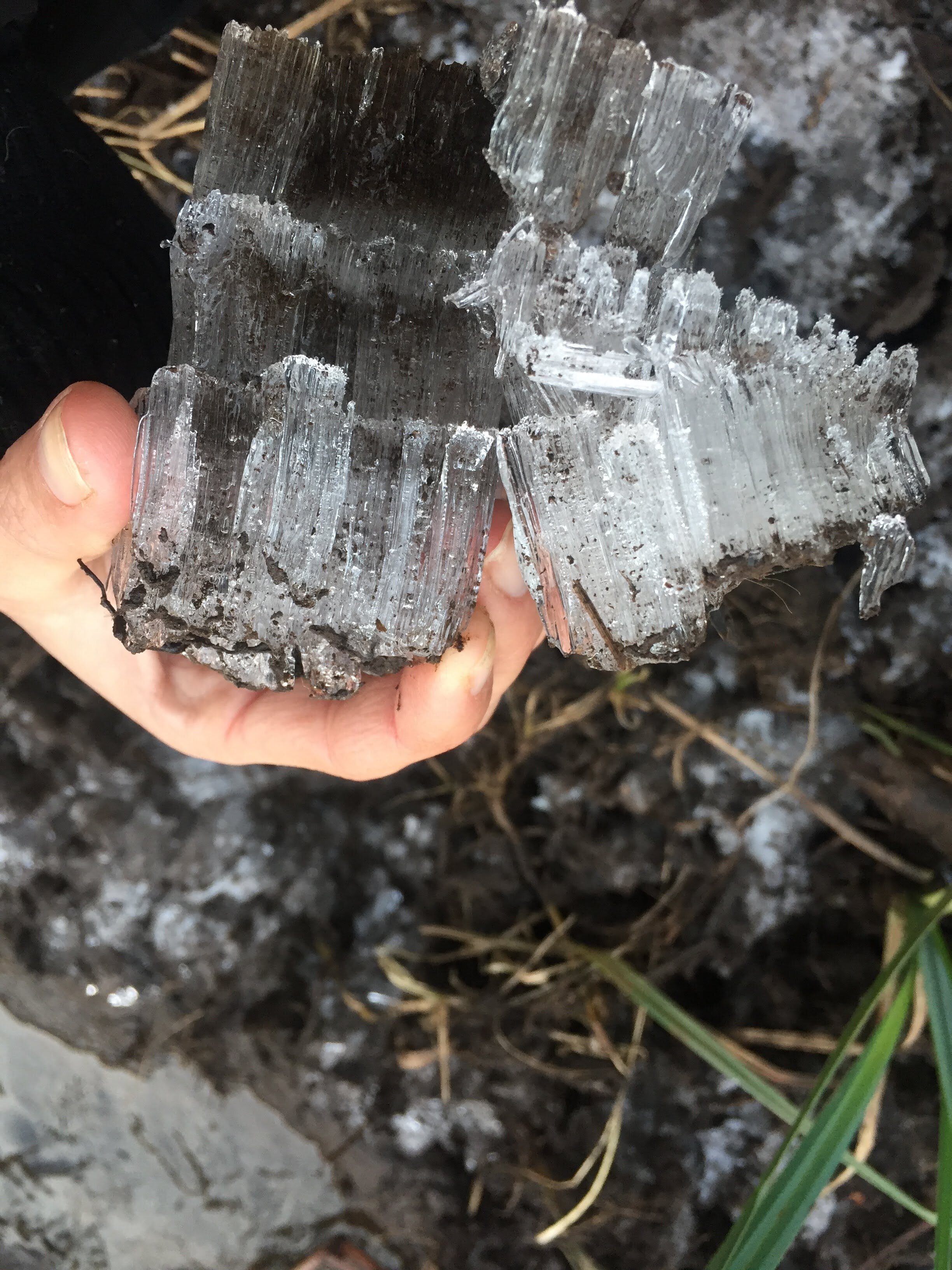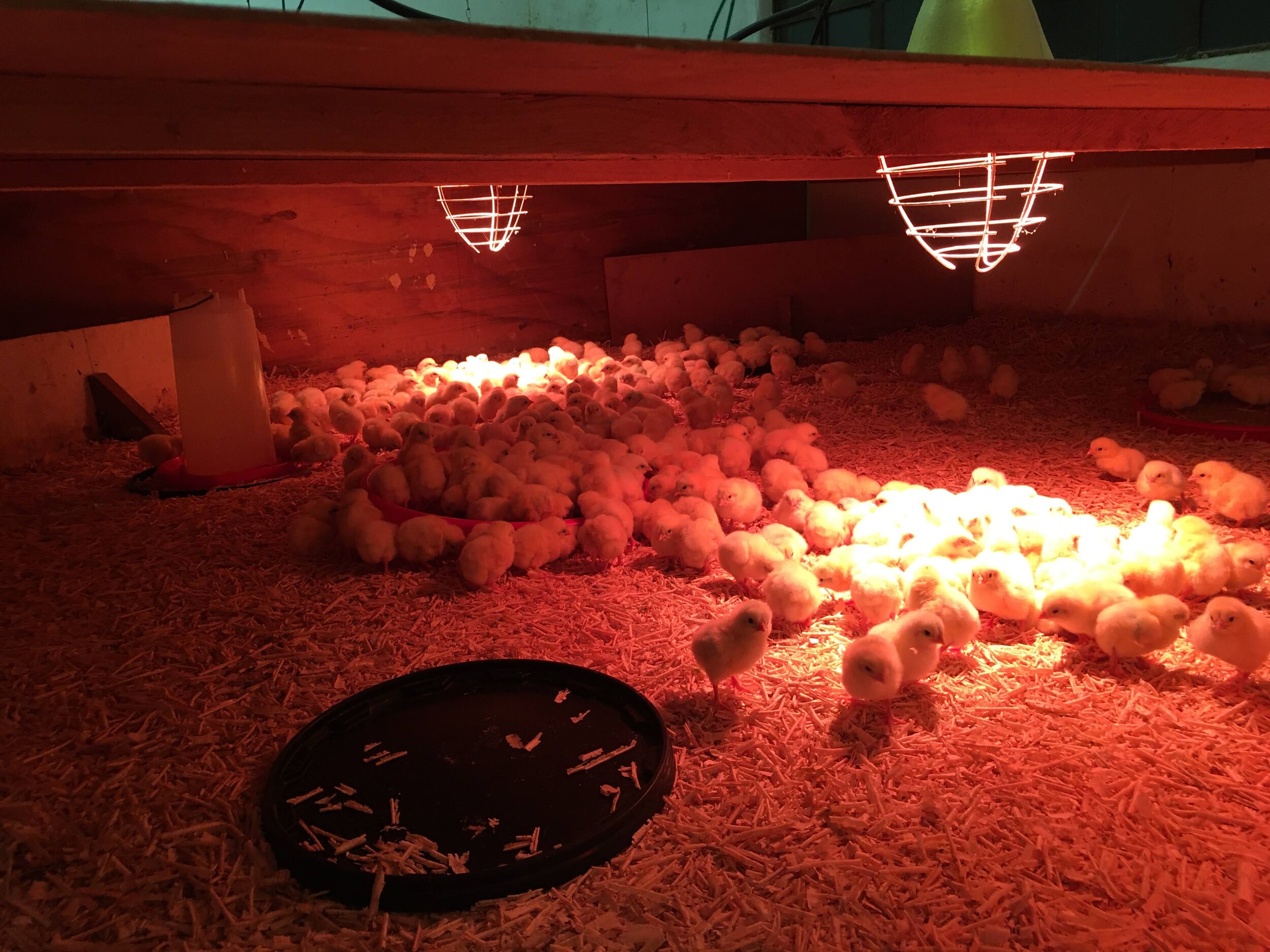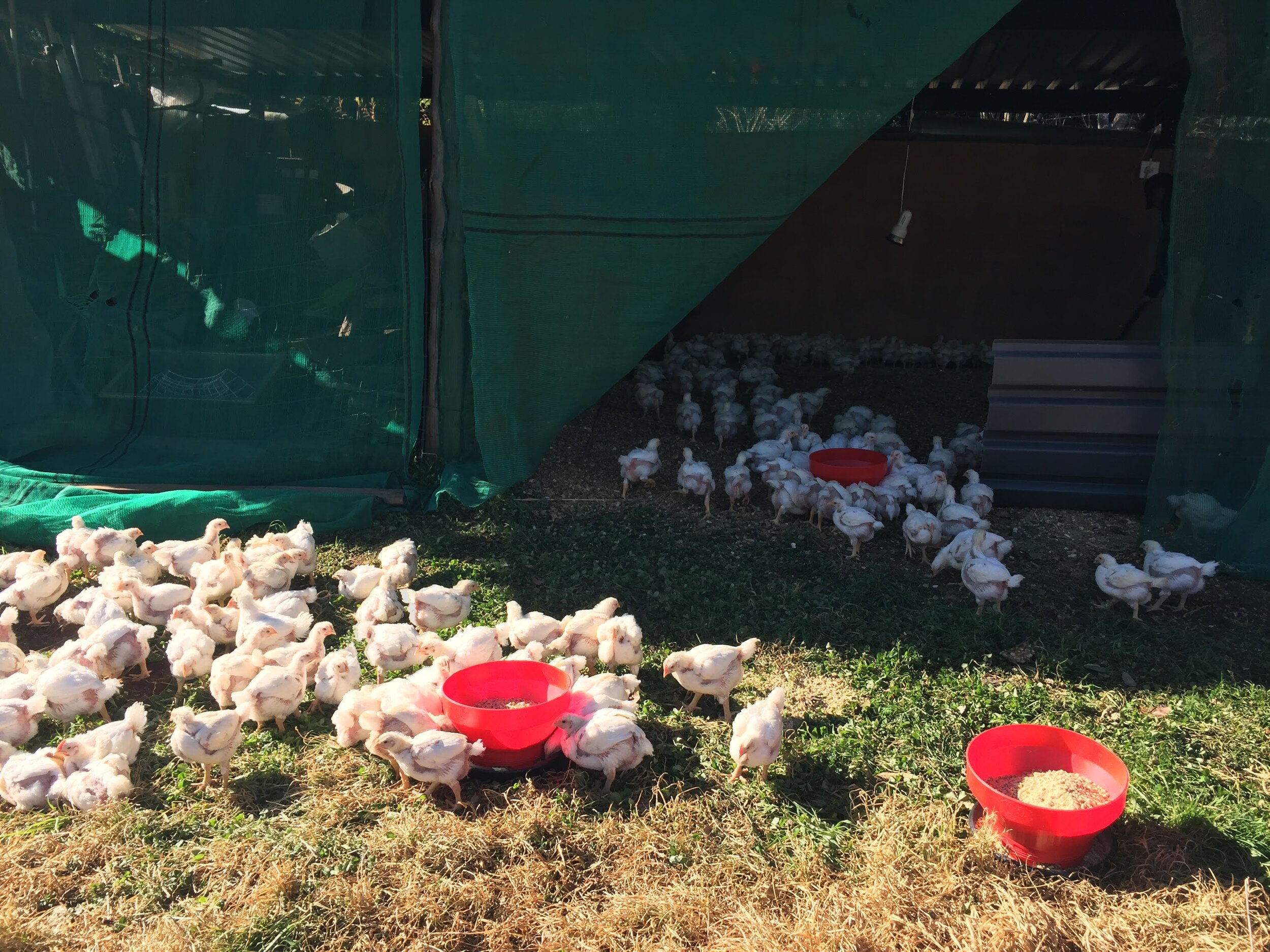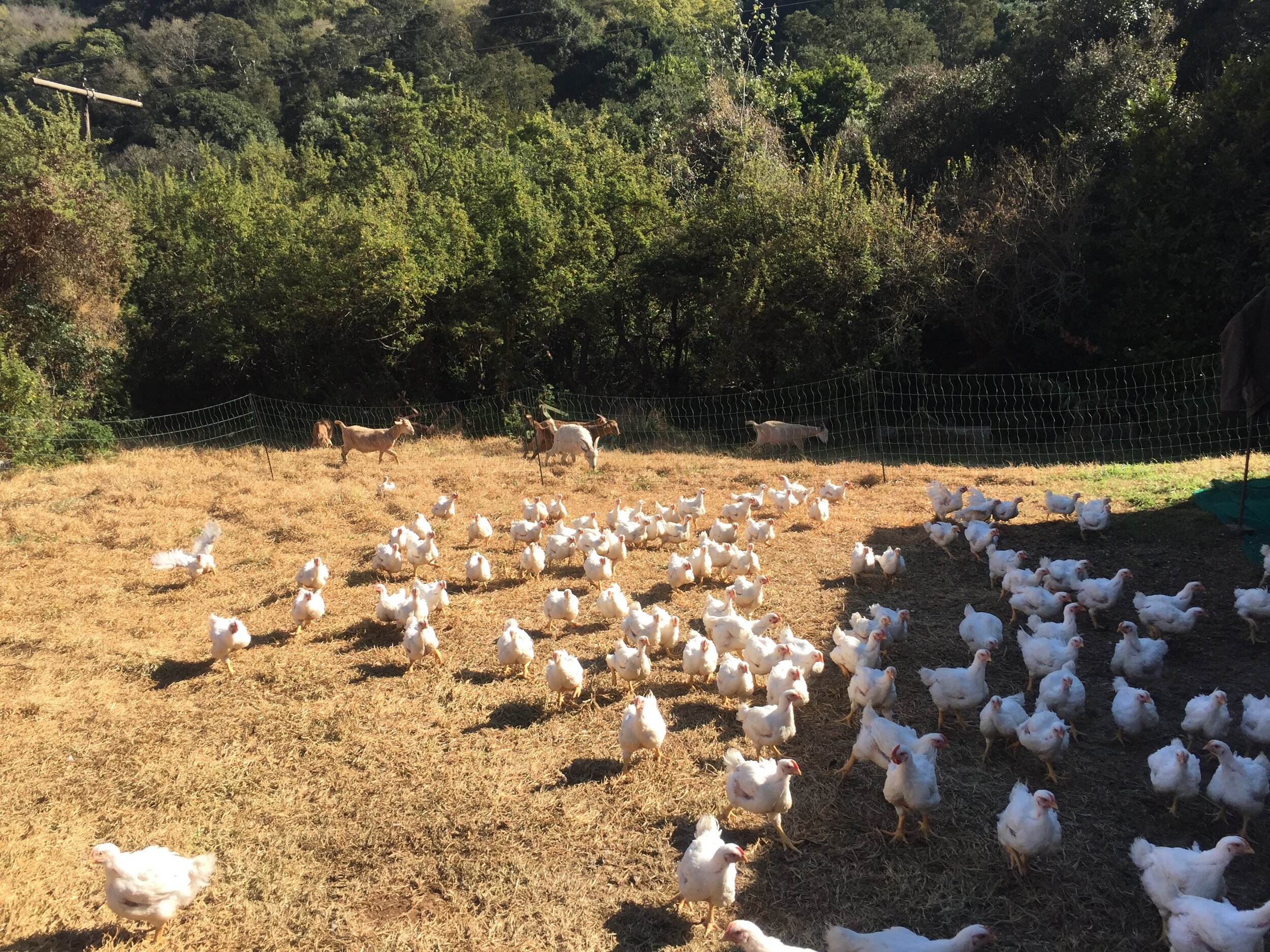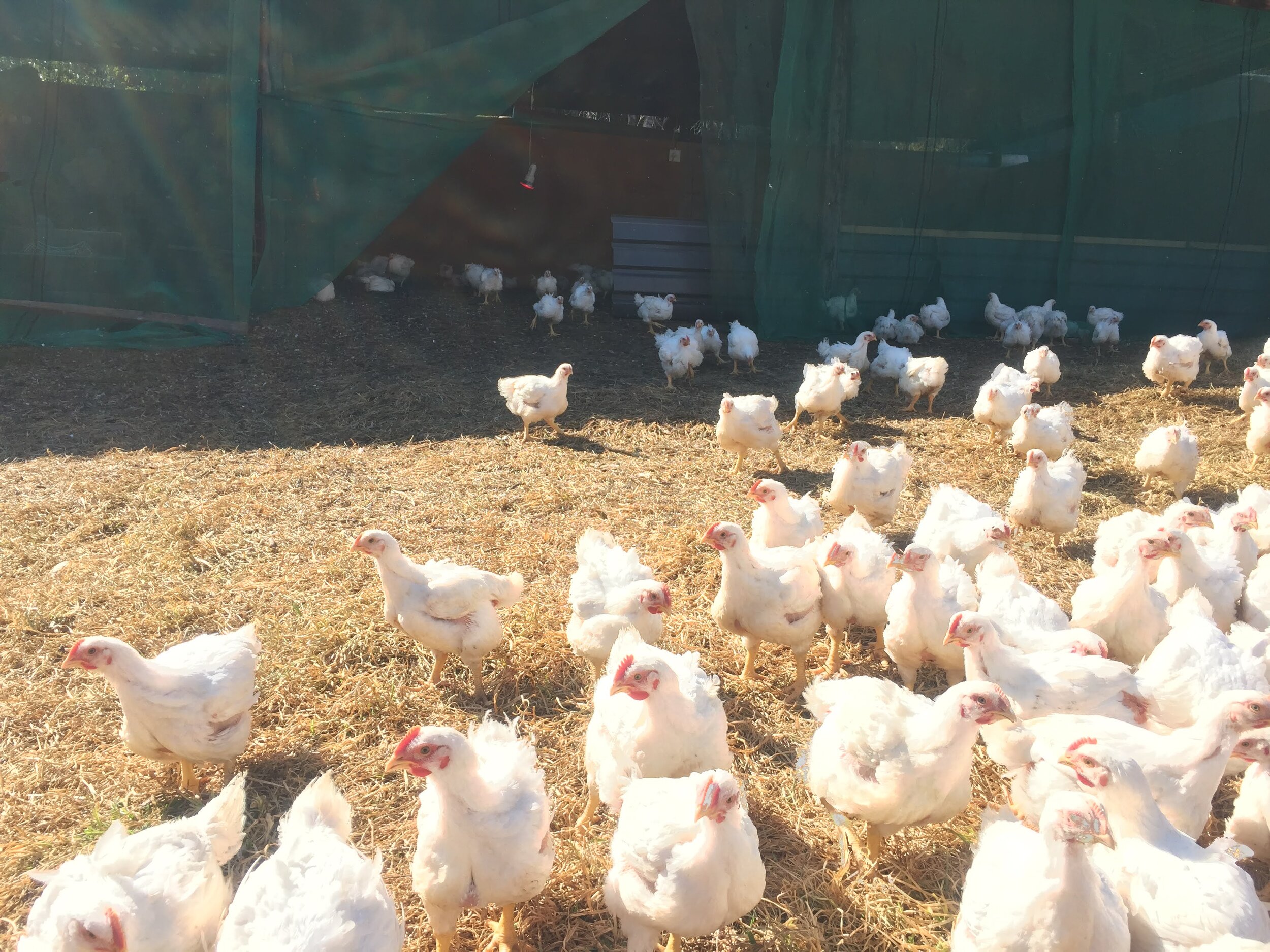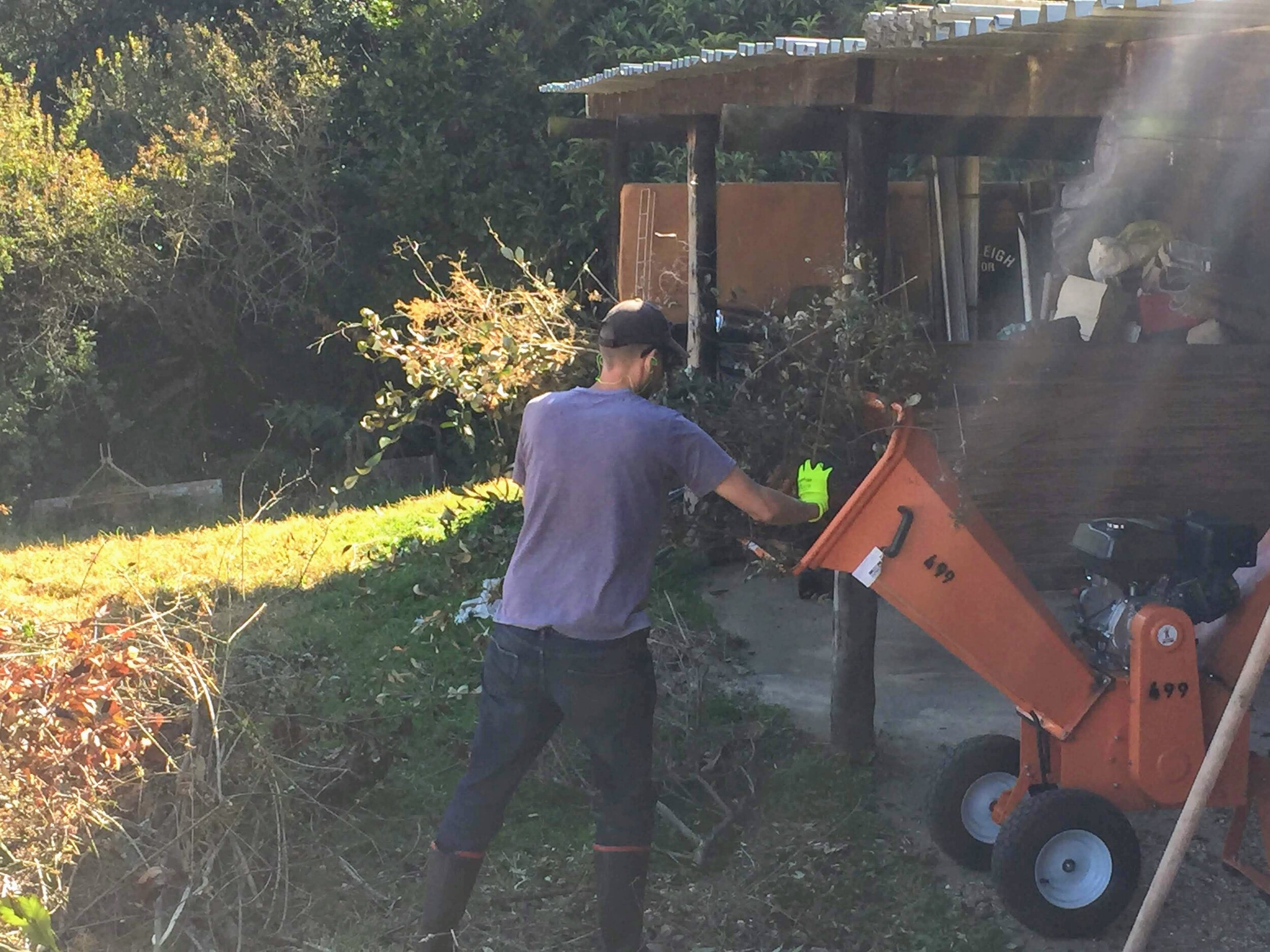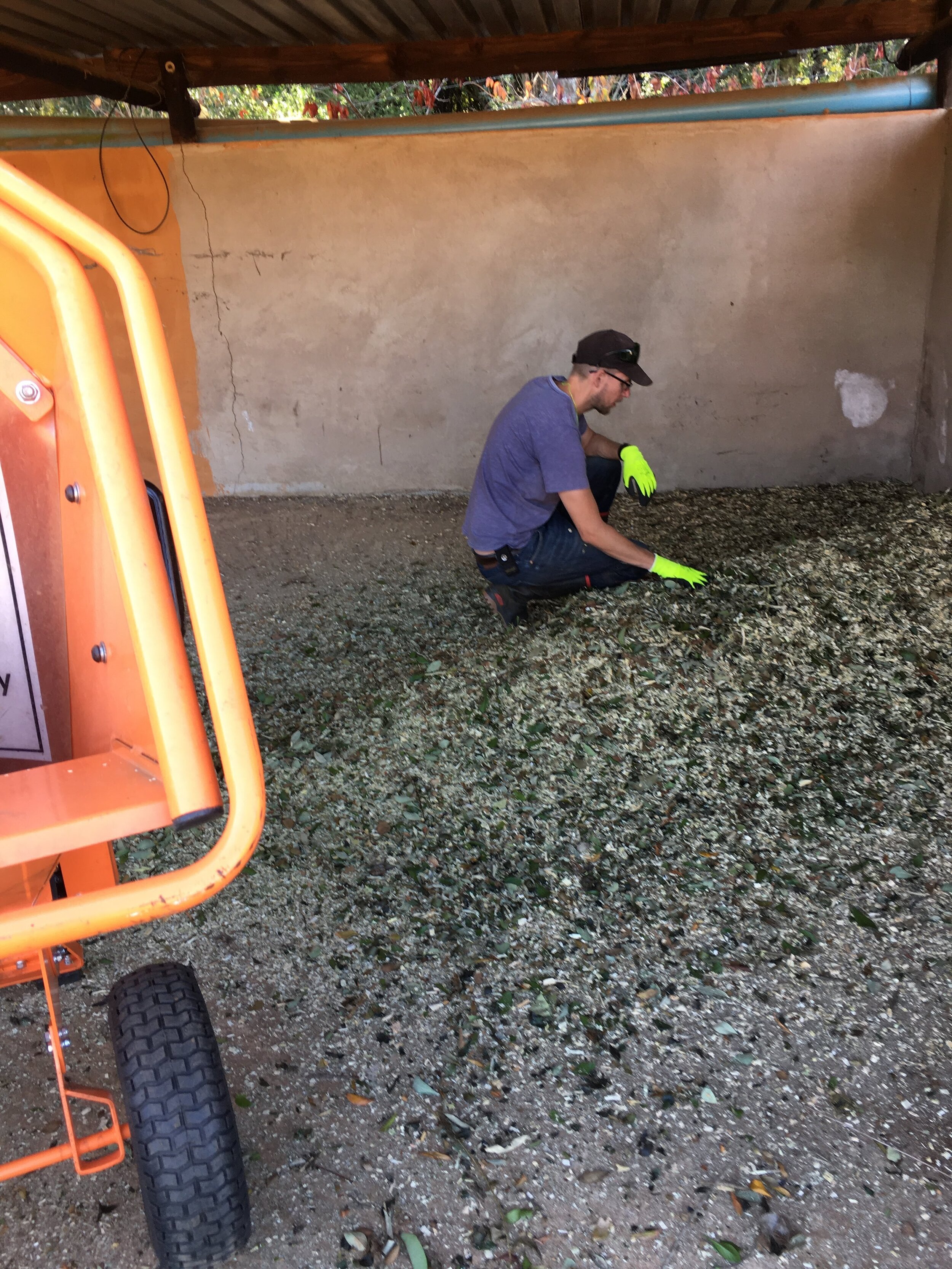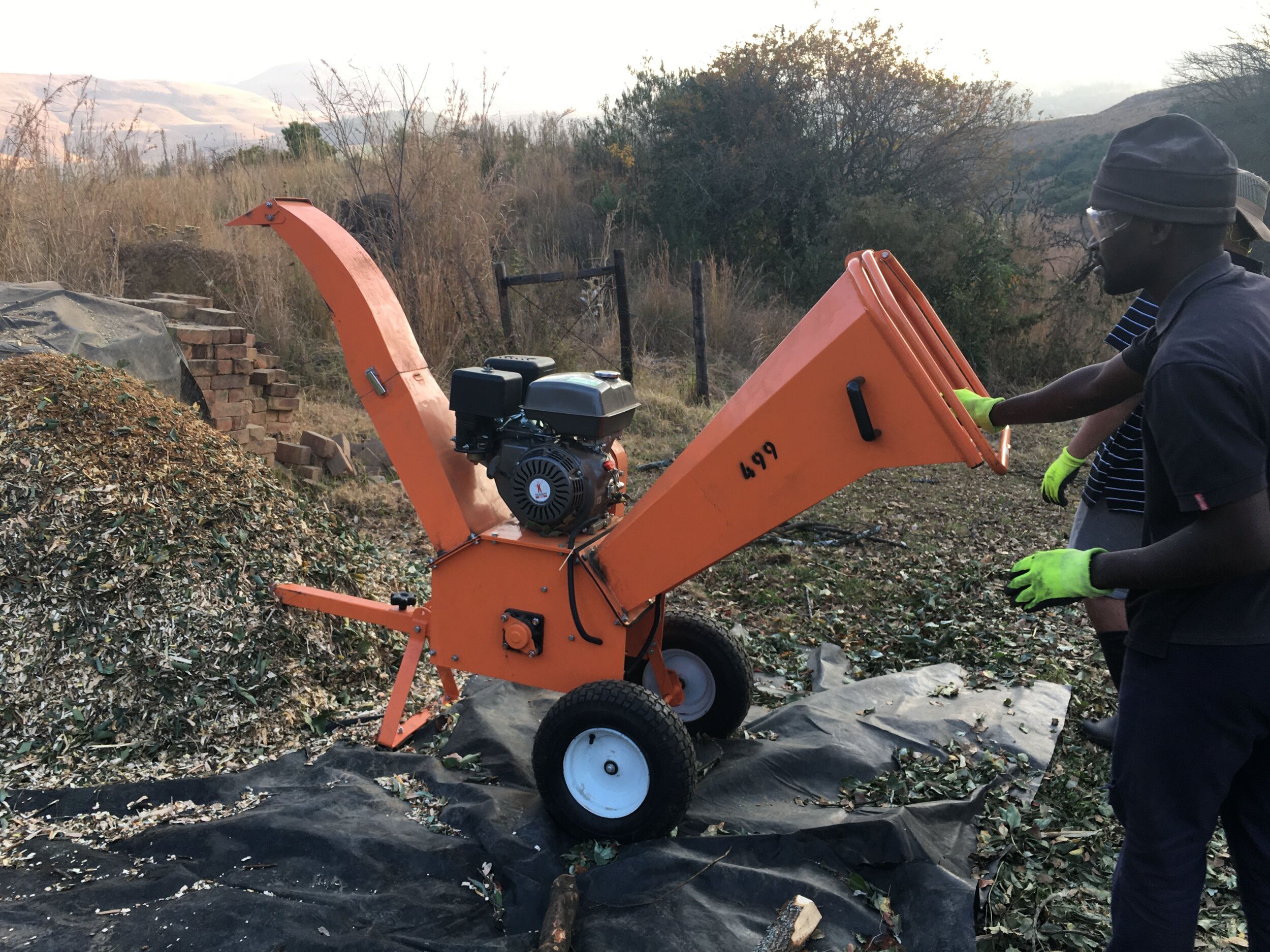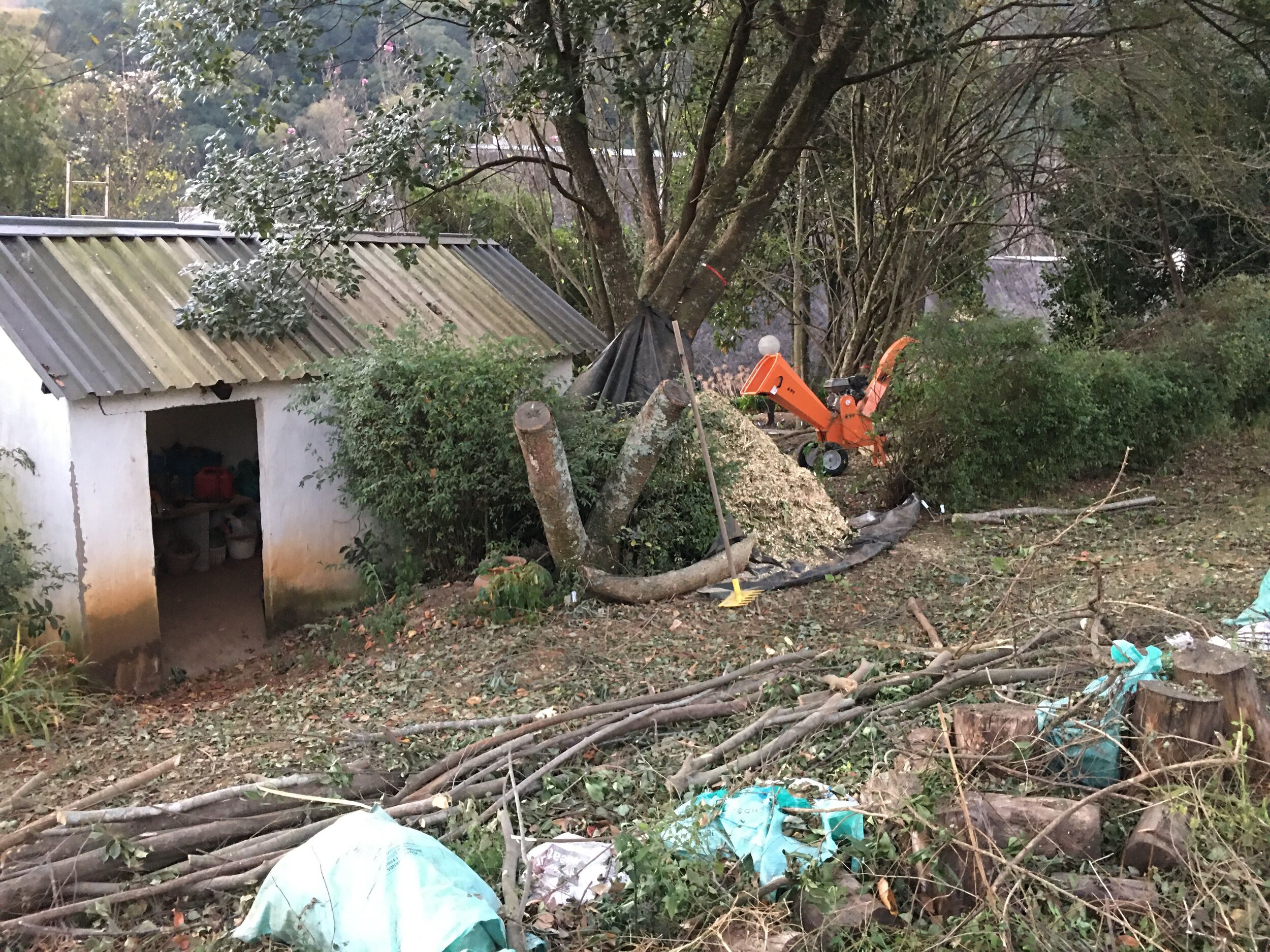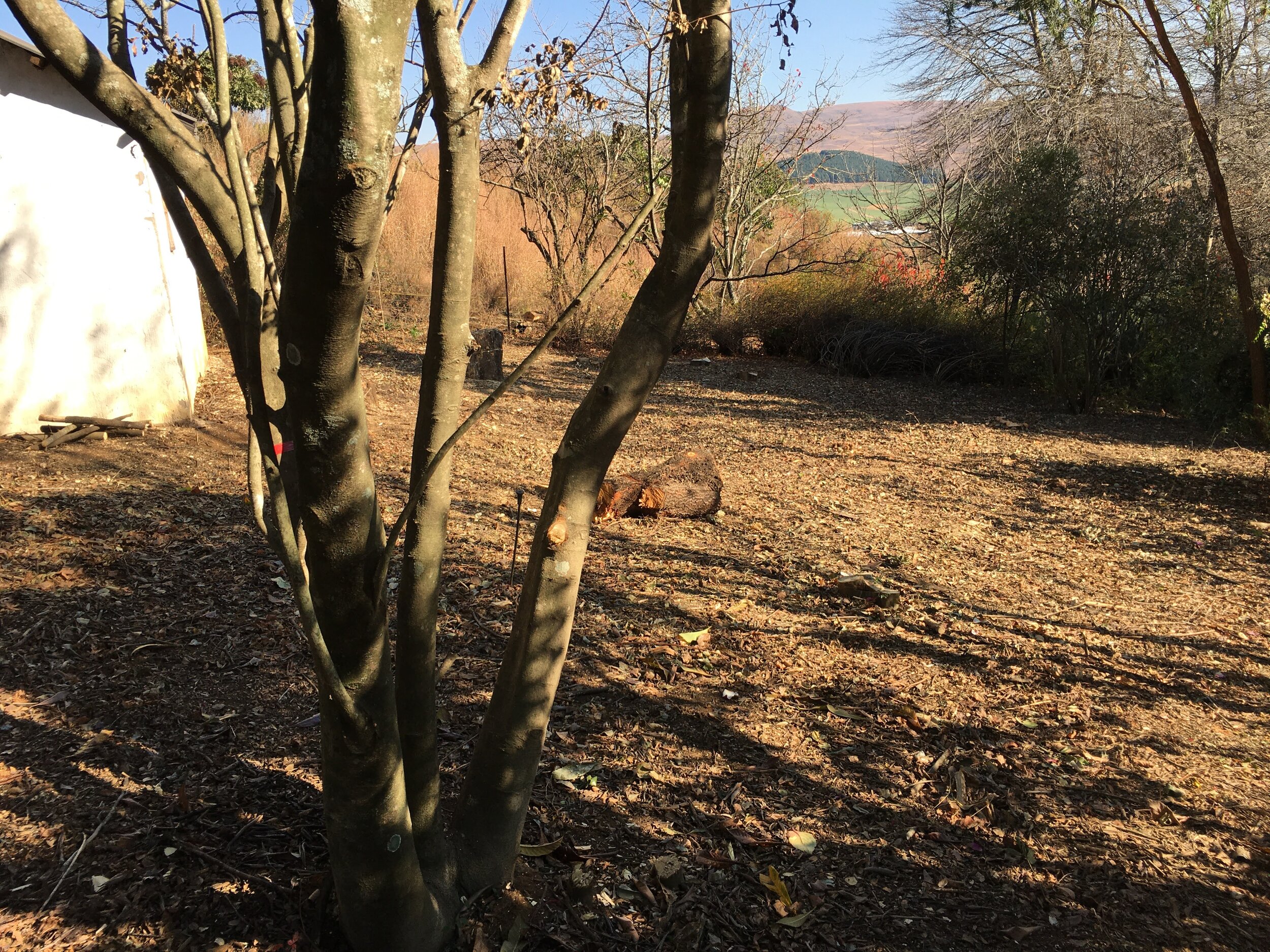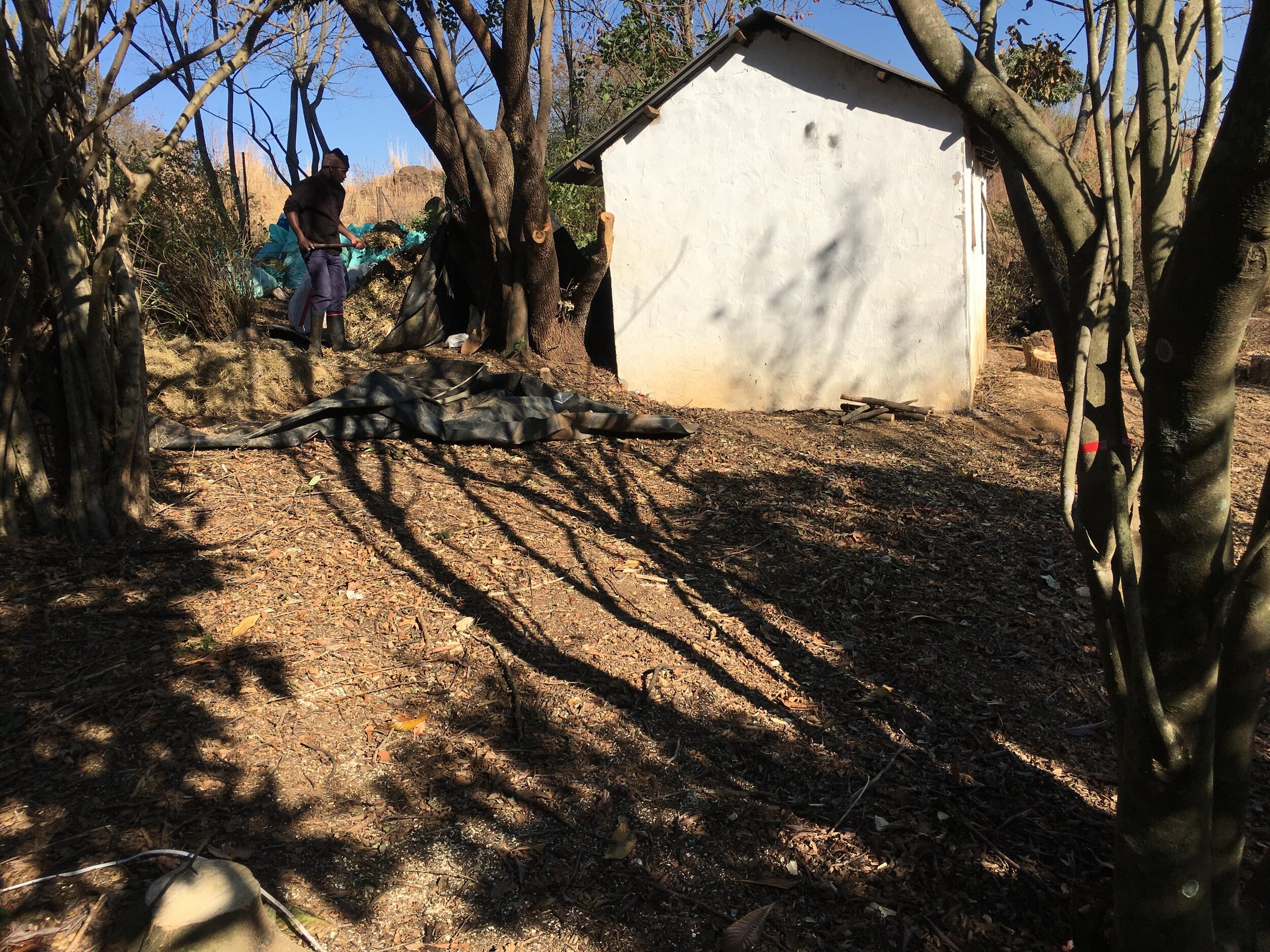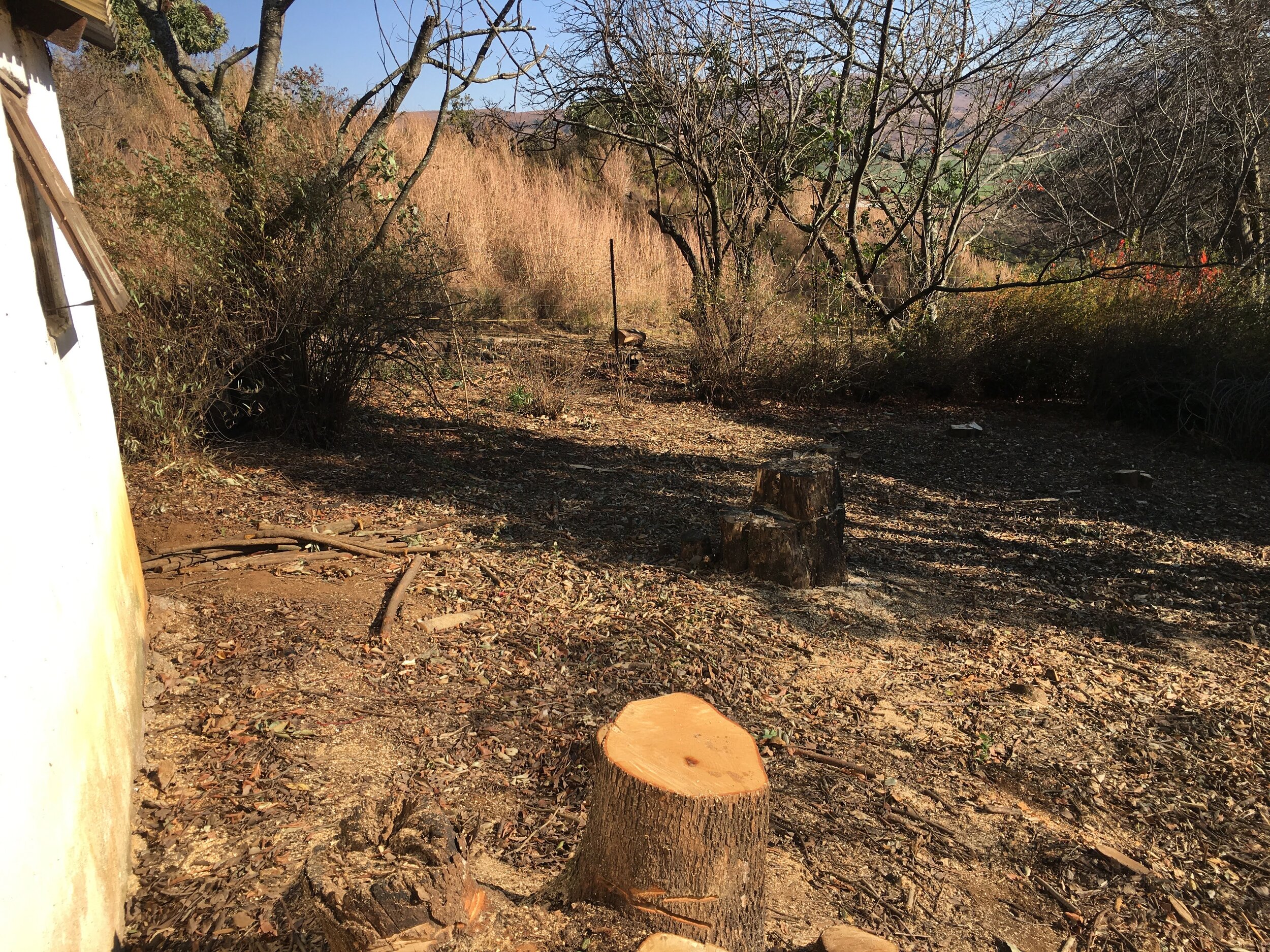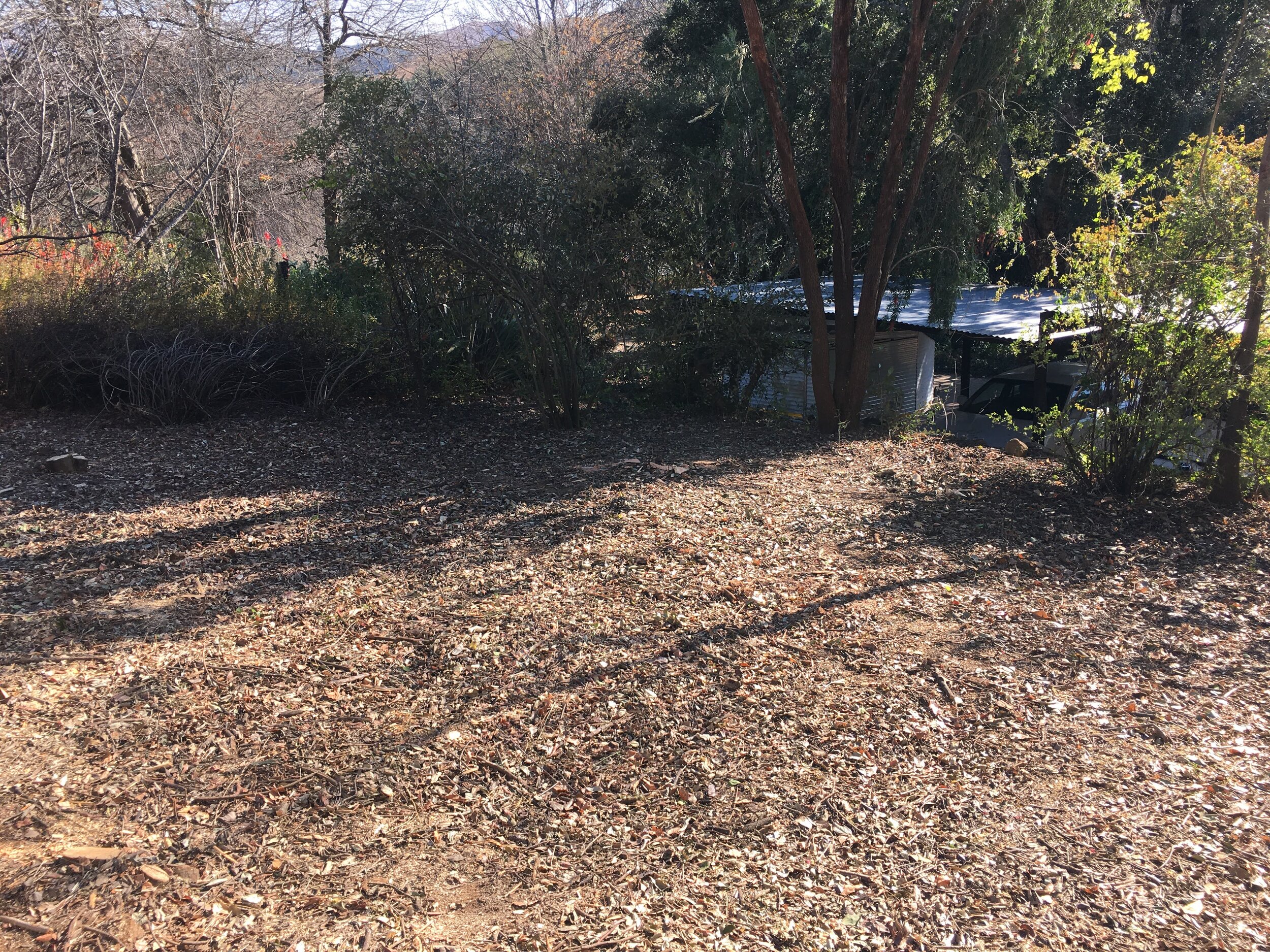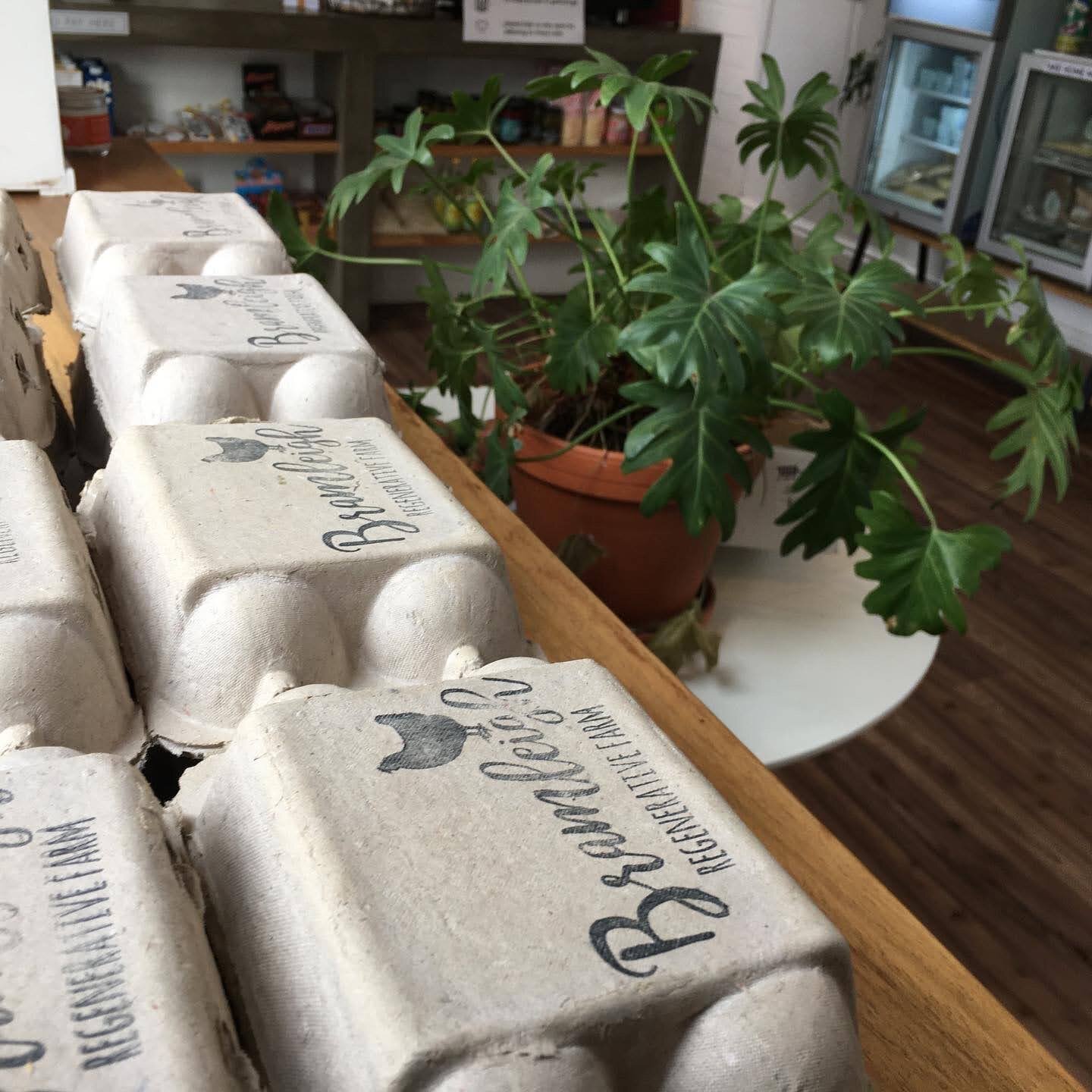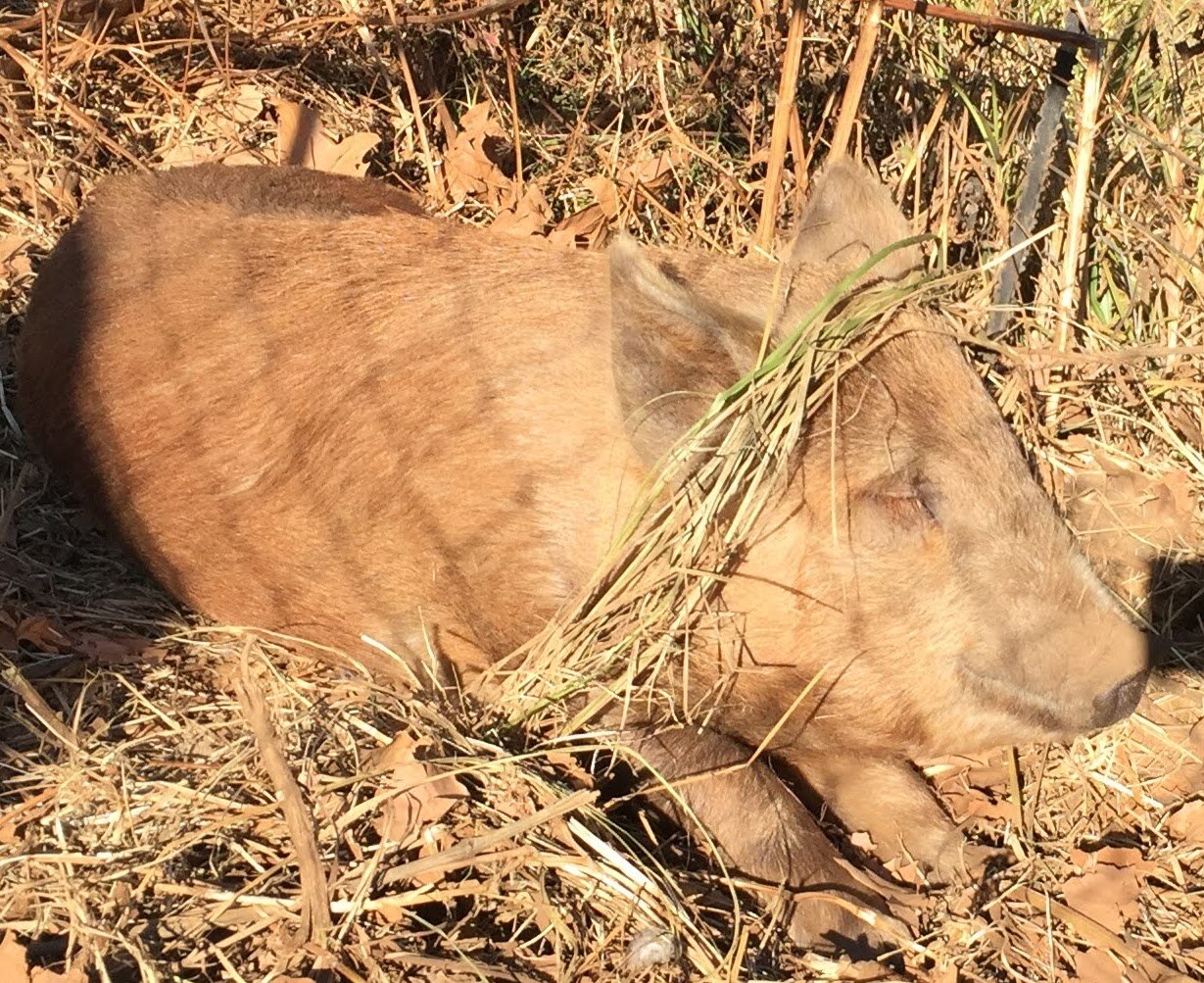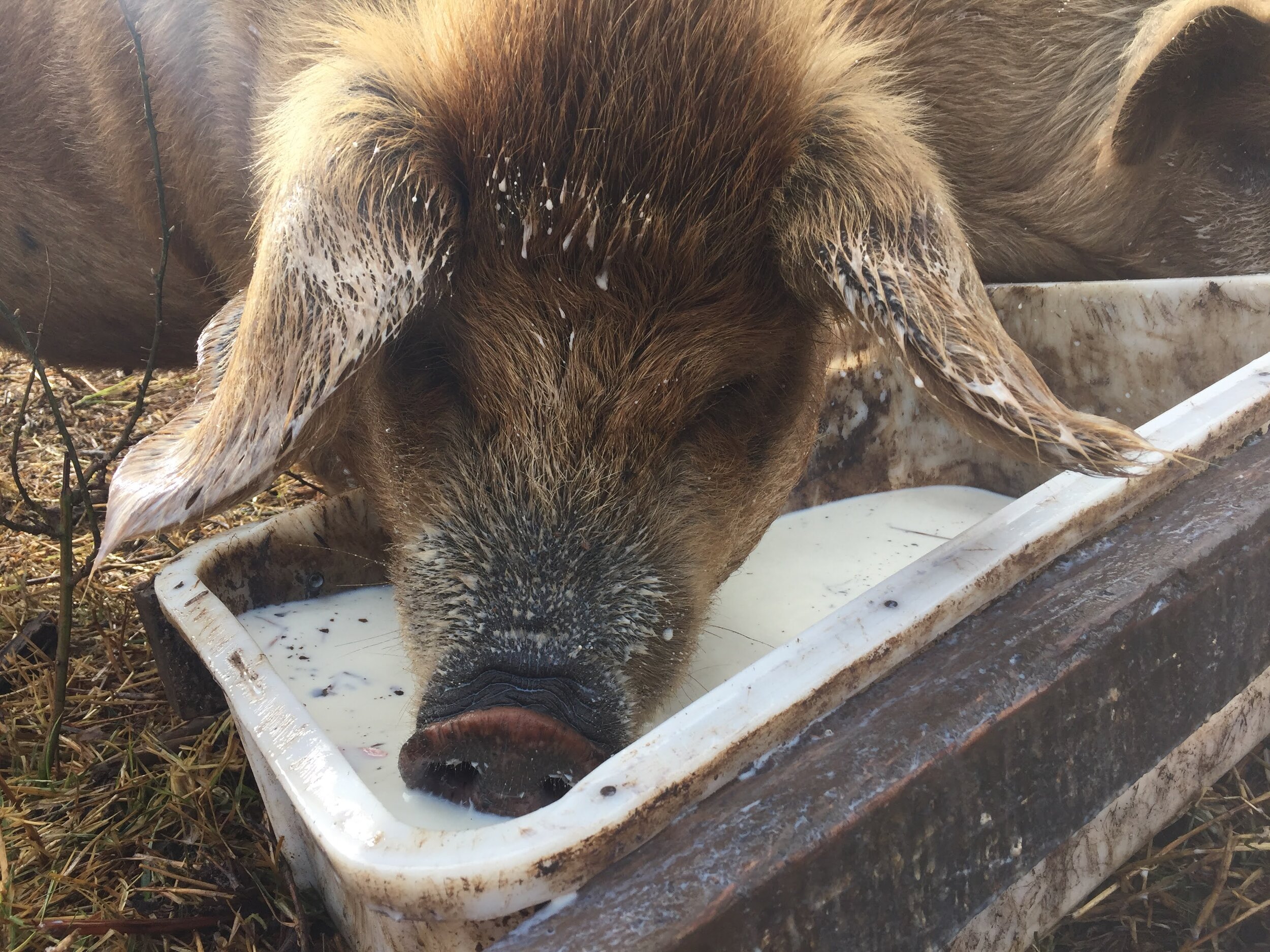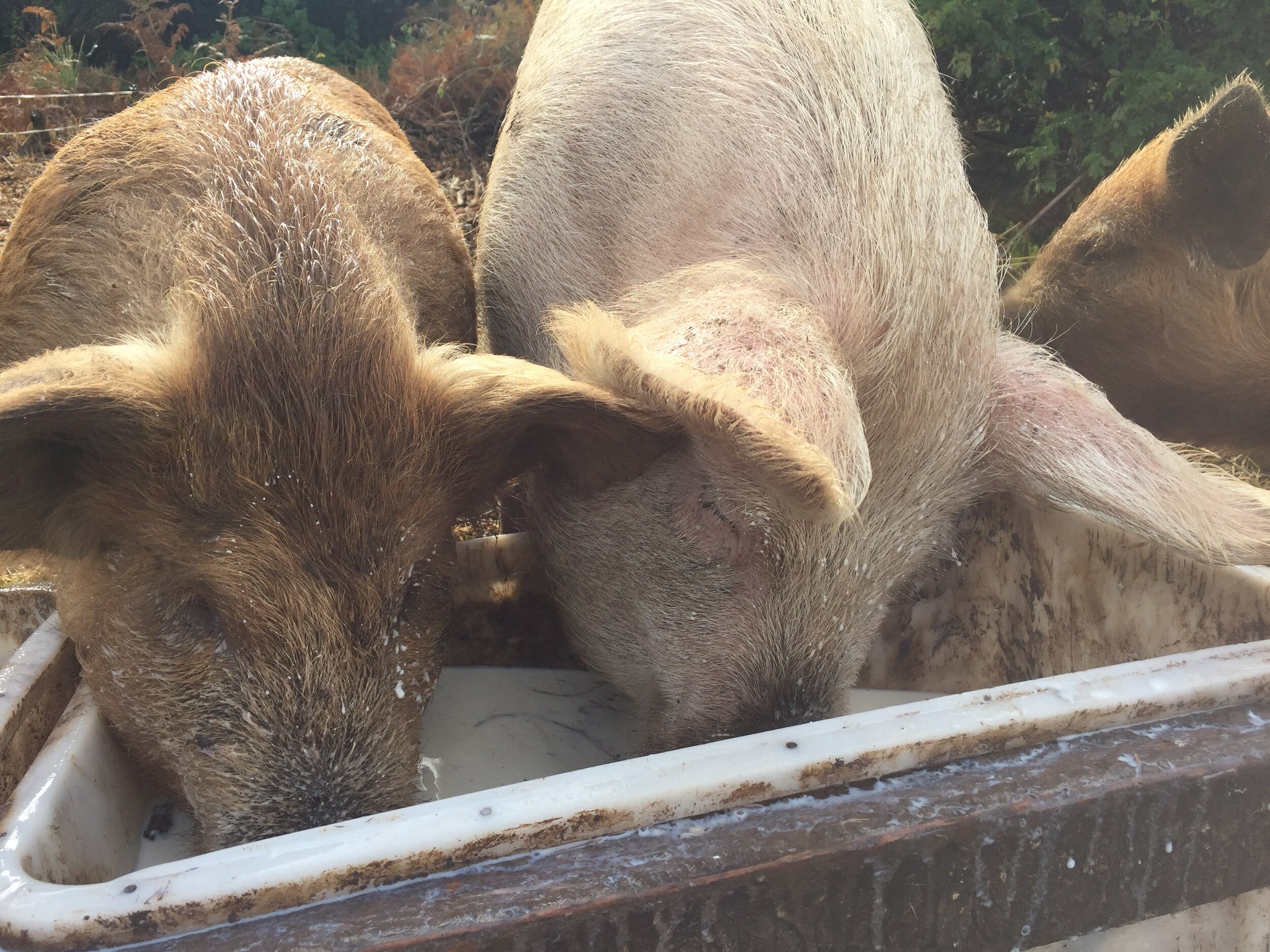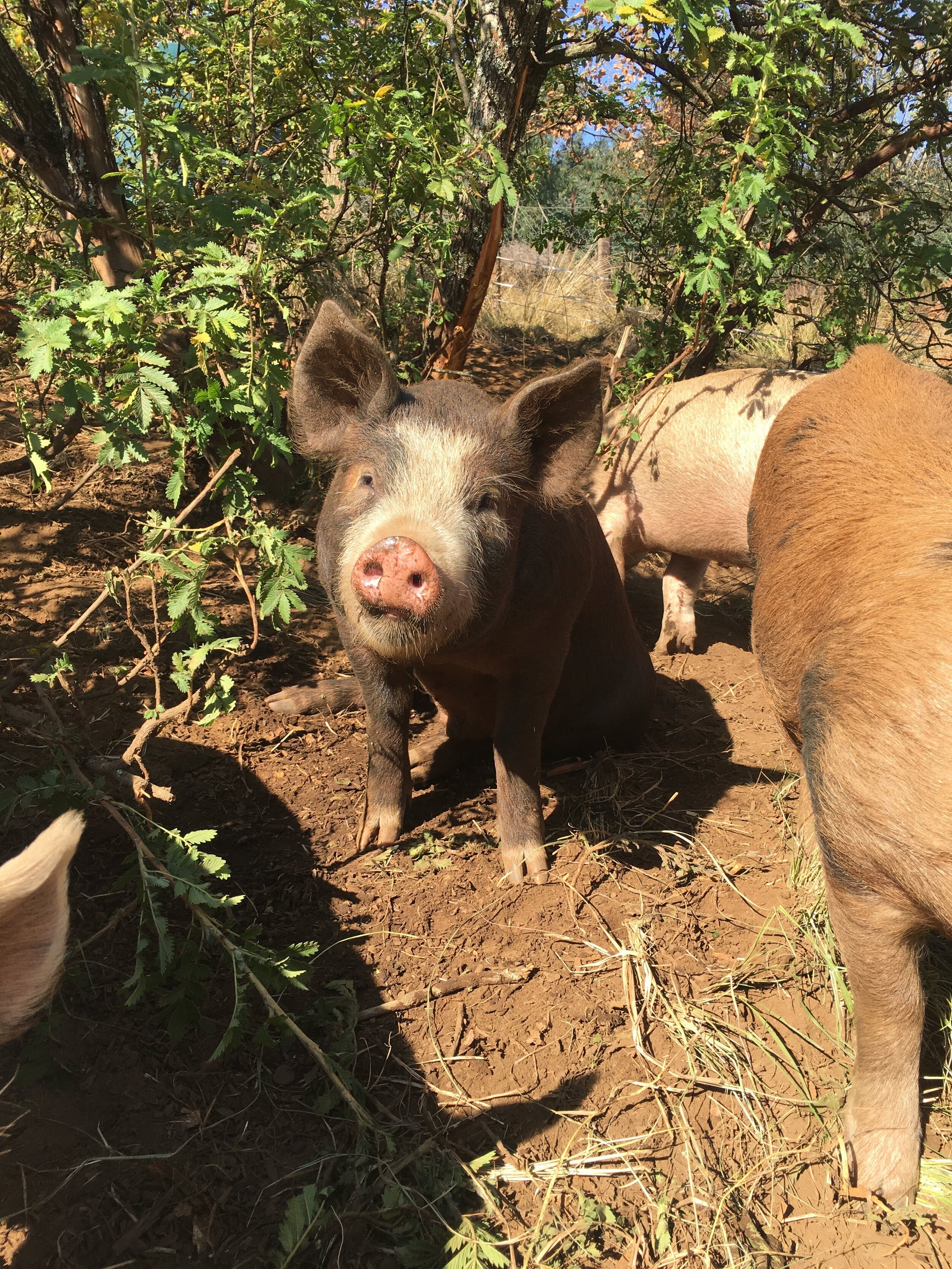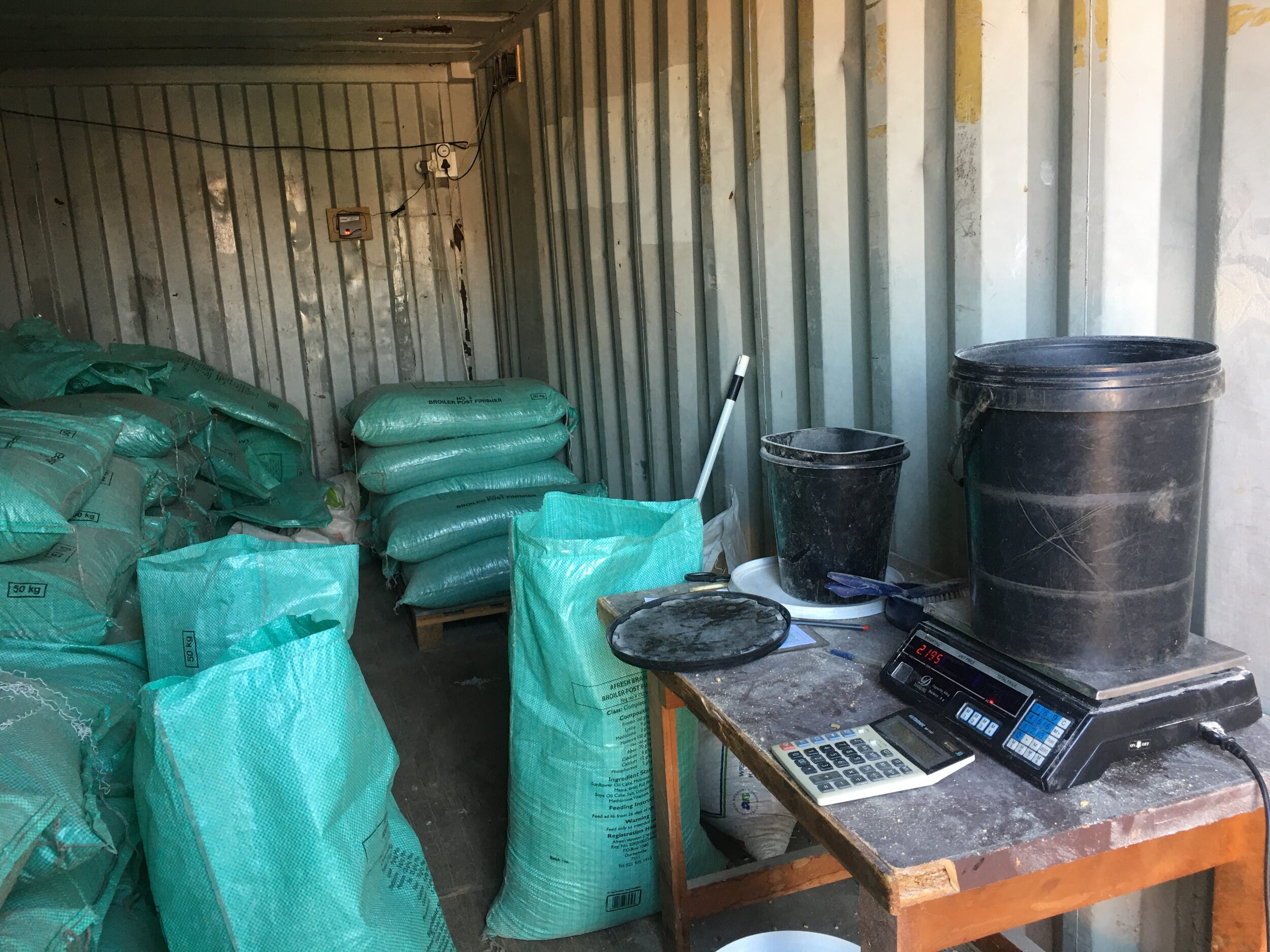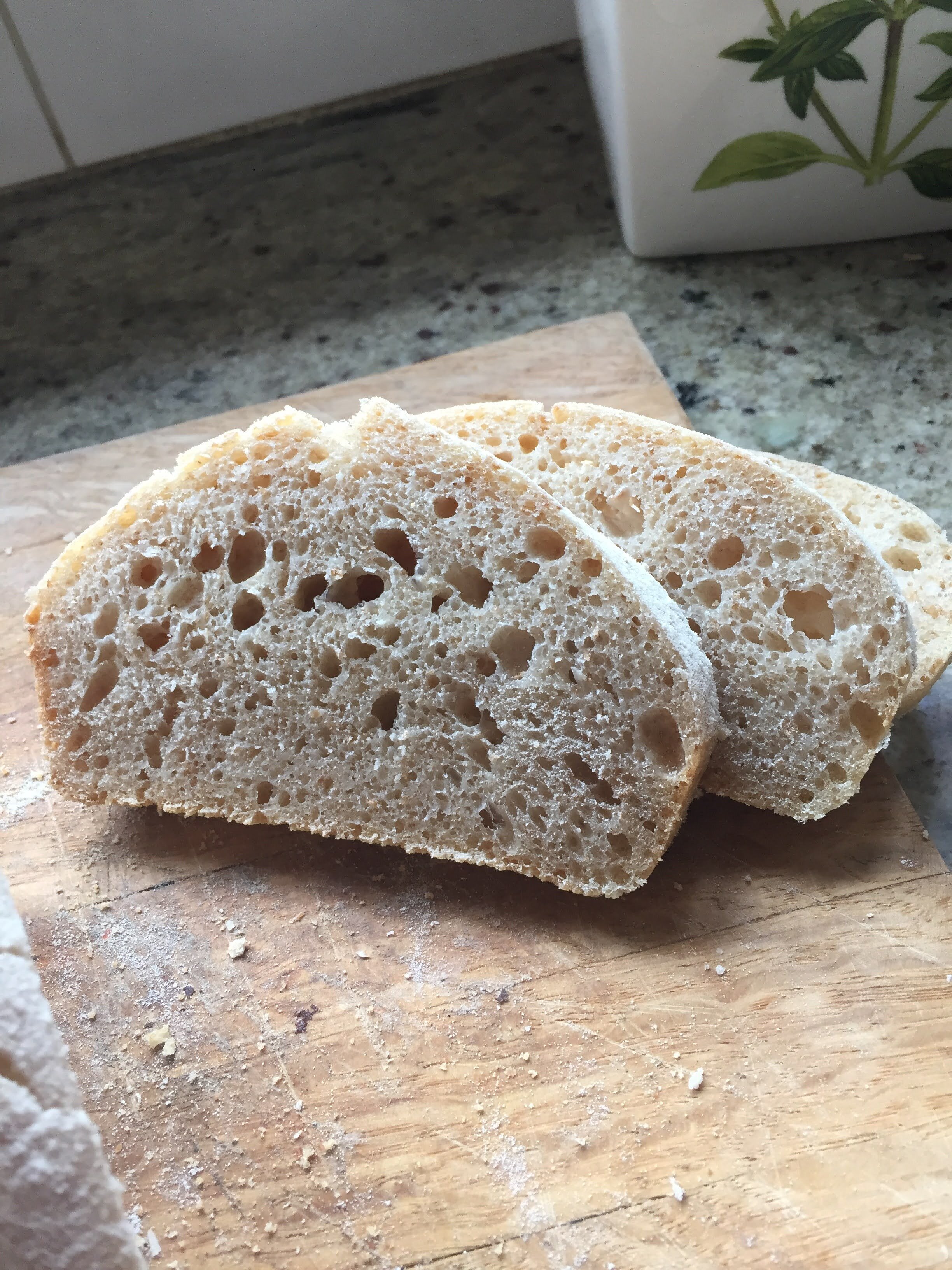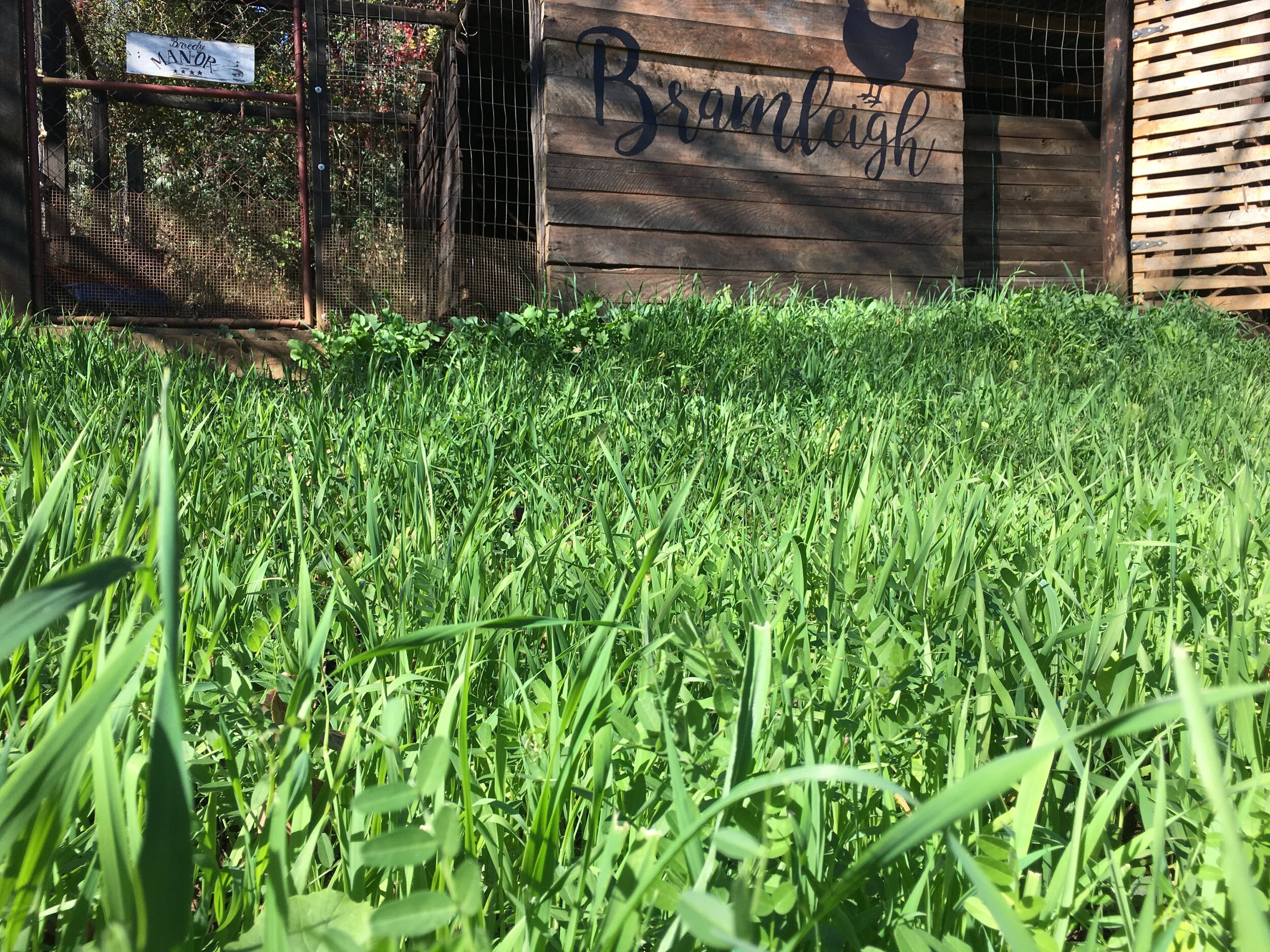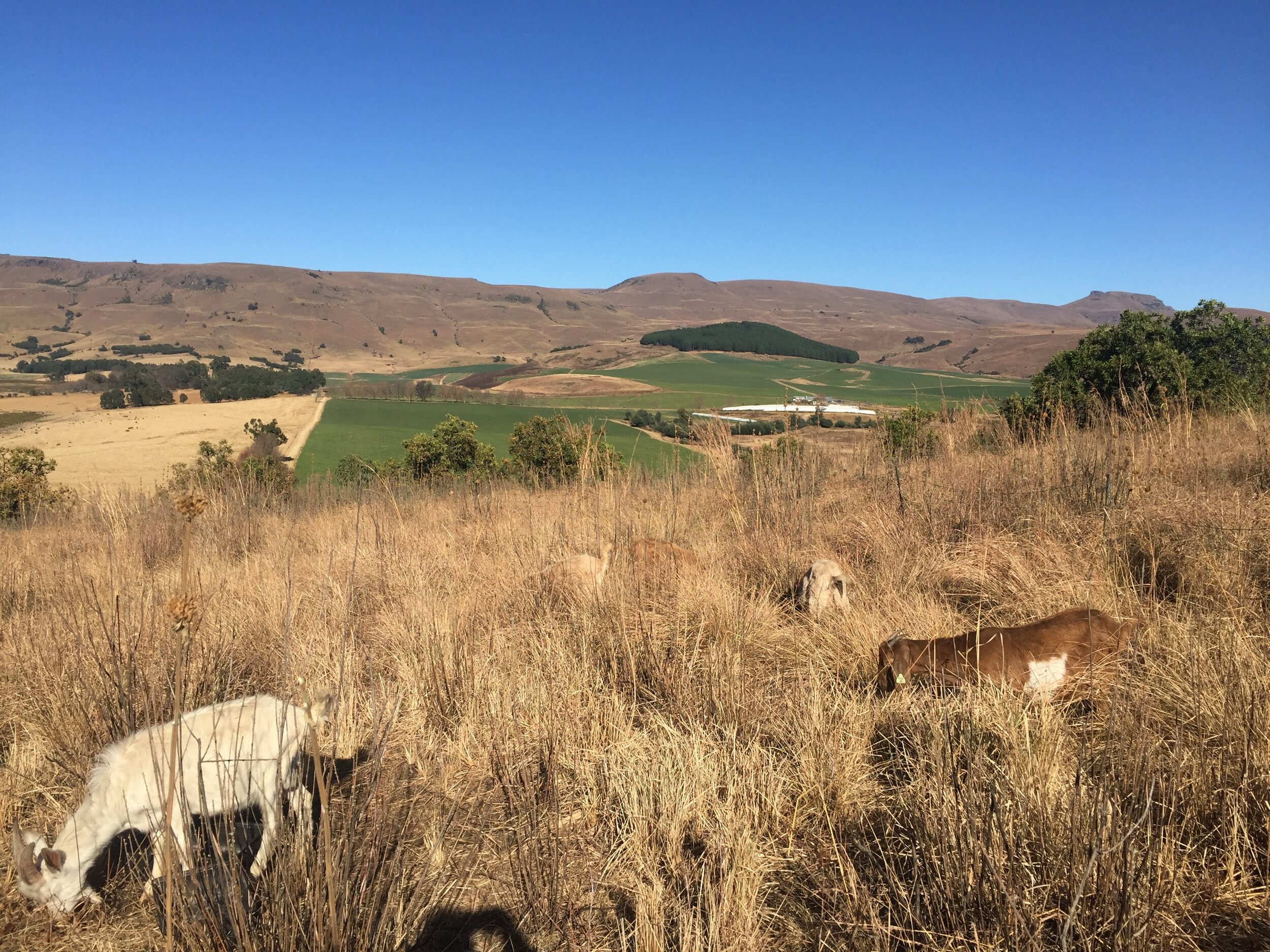June 2020
June 2020
As we stepped into the middle of winter, June came with SO much learning and experimentation. With Nature going dormant around us, it was challenging to keep pushing against the natural pace of things, a lesson in itself!
We kicked off with some freezing cold days, colder than we have experienced in our time at Bramleigh! The cold front pulled in on a Thursday - as it always does! Thursday is usually the day we get new chicks, on our way home from REKO. It is amazing how many times a Thursday is cold! We had 3 week old chicks in the brooder that were moved out, and brand new day olds coming in, so the week was spent madly preparing to protect from the vicious front that was moving in.
Over the weekend, the temperatures plummeted and we had thick frost and ice. We had to bring animals in, make sure they had warm bedding, their water kept freezing over, even the stream at the bottom of the property froze, on multiple days, giving it layers of exquisite crystals!
Pasture Raised Chicken
Our solution for the new chicks was a box brooder. Something we had not used before so it came with its challenges of ensuring chicks were warm, but not too hot. The first week in the brooder is critical. Any issues at this stage can lead to pneumonia and other respiratory issues, as well as organ development problems that only show up much later on, once the chicken has been fed for weeks. The chicks managed to do alright during that freezing weekend, our initial losses were higher than normal but much lower than it could have been, given how cold the ambient temperature was.
Compost chickens
The second hurdle was the chickens that were due to move from the brooder out onto pasture. Chicks are kept in the brooder until they have lost their soft yellow down and are feathered out with their white, warm adult feathers. However, moving from brooder to the outside is always tricky, and despite phased cooling of the brooder, it is still a shock to the chickens and has to be managed carefully. We usually begin by turning brooder lights off during the day for a few days, then off day and night, and then keeping windows open to let cooler air in during the day.
Being on a slope, we often have issues with chickens huddling for warmth and slipping down the hill, ending up in a big pile at the bottom of the shelter, which can cause injury and suffocation. To prevent this, we decided to try a ‘step down' brooder’ approach by moving the chickens out into a shed during the cold, where we could use heat lamps at night, and outdoors during the day. This is more like a free range style of raising chickens, but a one-off experiment. was a win for the chickens, but they were also put to work in the shed… making compost!
We modified a three sided shed by adding floor to ceiling curtains on the fourth side, and inside was a layer of wood chips that we had made from cleared shrub in the garden. The decomposition of these wood chips provided warmth on the floor. At night we turned on heat lamps in the shed to keep the chickens warm, and during the day they went outside in an open paddock. When the chickens joined the party, their manure added to the wood chips and further accelerated the decomposition. Daily we added sawdust to keep the chickens dry, and turned the litter. It produced a to of warmth. So our compost chickens were raised in a more free range style which was a fantastic experiment for us, the chickens, and we got a whole lot of compost out of it too! Usually the manure from the chickens raised on pasture goes straight onto the grass and builds top soil, to great effect. It is spread widely as the chickens move every day. But gathering the manure for compost means in spring, we can plant out our veggies without having to buy in compost.
We learnt A LOT in this experiment. You can read about the lessons in here and how we will be going forward with our pasture raised model.
Vegetable Garden
Over the last few months, with help from the Chanthunya family, we have been clearing a lot of overgrown shrub and trees. Part of this included clearing a new vegetable garden area. When we first moved to Bramleigh we used open and available spaces for growing vegetables, not wanting to impact on the large garden that was once a show garden. We very quickly learnt that the spaces we had chosen were not suitable for vegetables since they were out of our every day view and walking routes, leaving them quiet and susceptible to damage from baboons, lacking in attention, and exposed. Going to check soil temperature and moisture was an out of the way thing, so it didn’t happen as often as it should. Over the years, we have become more confident to put our stamp on this garden. We can no longer maintain a show garden, nor is it necessary to do so. So we picked out a site, close to the house and along a pathway that we walk daily. Interestingly, back in the day, a tool shed was built in this space - hidden from view by trees, but now perfectly situated for our purposes!
While we may have to contend with roots and rotting stumps for many years to come, we cleared a whole lot of ornamental and alien plants. The area was so grown over by trees so the floor is like a forest with rich soil and natural mulch. We kept a few trees for dappled light and protection from wind and frost.
The first two photos show the wood chips going into the shed for the compost chickens. Then some action shots and the resulting piles of wood chips and cleared space. The long late afternoon shadows of wintery sunshine will bring welcome shade in the summer heat.
Pasture raised eggs
Our ladies have been working overtime to keep up with the demand for their delicious eggs! We hope to welcome some new members to the flock in the next few weeks. Egg laying tends to drop quite a bit during cooler weather, another natural cycle of slowing down for a season.
Pigs
Keeping up with rotations and ensuring sufficient forage is always a very time consuming task in winter! Animals are hungry because they use so much energy to keep warm, grass doesn’t recover as quickly and fire breaks limit our paddock areas. These pigs are very good at making their needs known though! They like to build nests in the dry grass and cuddle together for warmth. On some days they even get hot enough to still build wallows!
We supply them twice a day with excess milk from two dairies next door to us, and vegetable scraps. Don’t be fooled by their calm drinking in these pics - it is normally brutal feeding them! They are big, hungry and jostle for prime position on the troughs, head butting each other, squealing, and the person distributing the milk will guaranteed end up with milk on (and in!) their gumboots! Once they settle though it is a pleasure to watch their slurping and blowing bubbles in the milk!
Some random photos of the month - our biggest feed order ever, filling the feed container storage area. This is for layers, broilers out on pasture, broilers in the brooder, and goats. We weigh out feed daily based on the number of chickens.
Sourdough experiments and winter cover crops.
Some goat fun - can you spot them all? There are actually six in here but Miss Jessica is super hidden!

